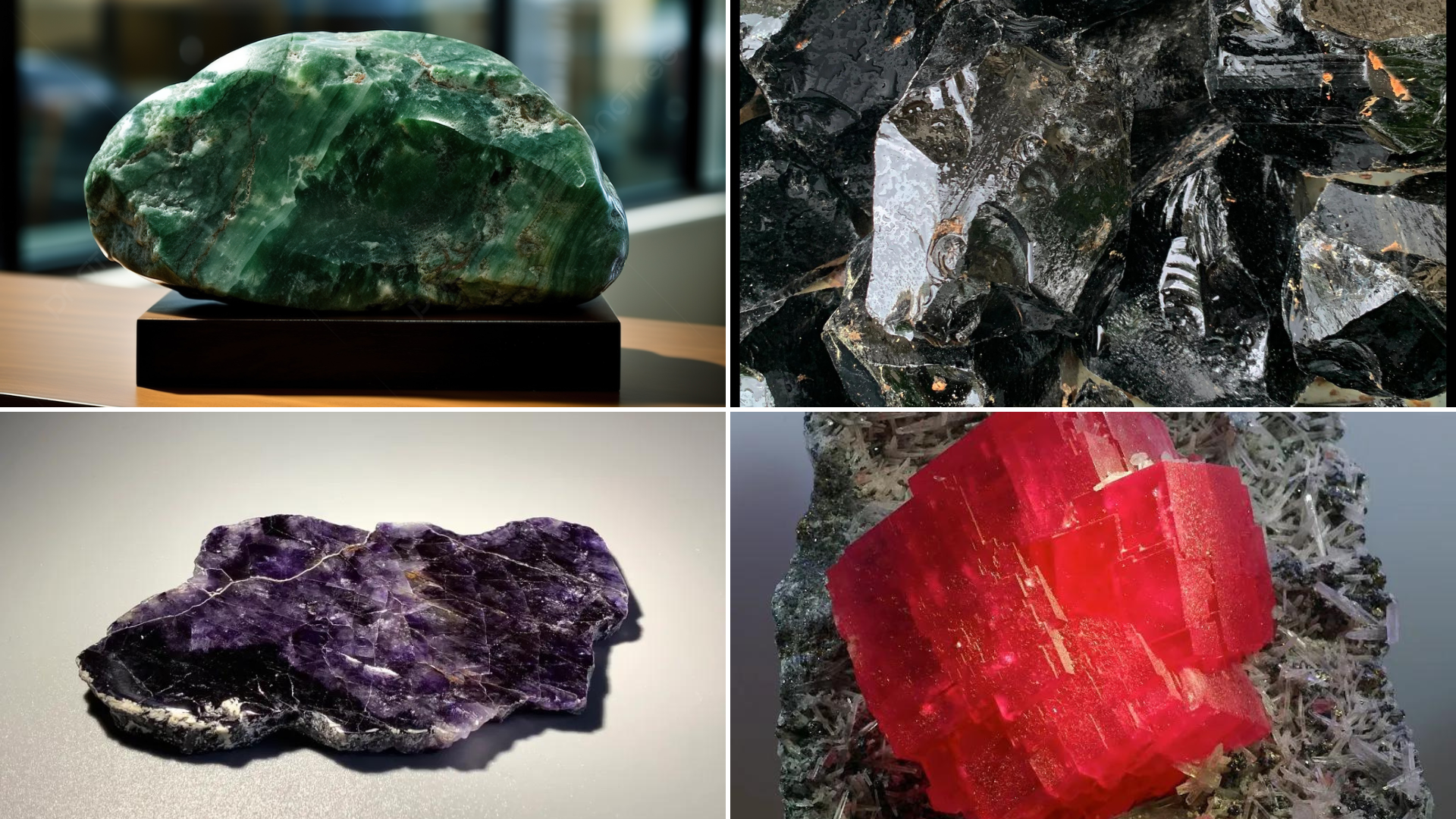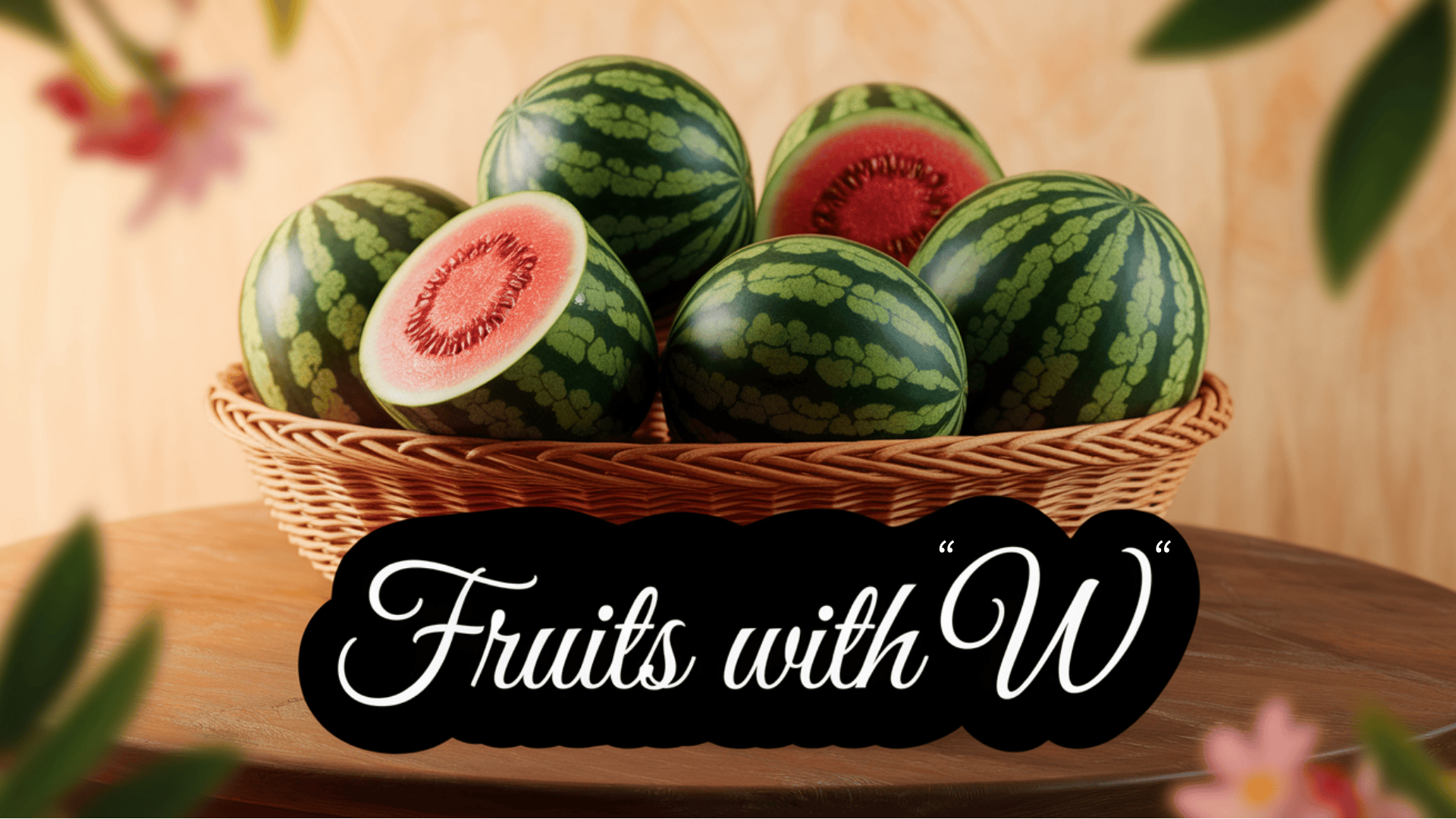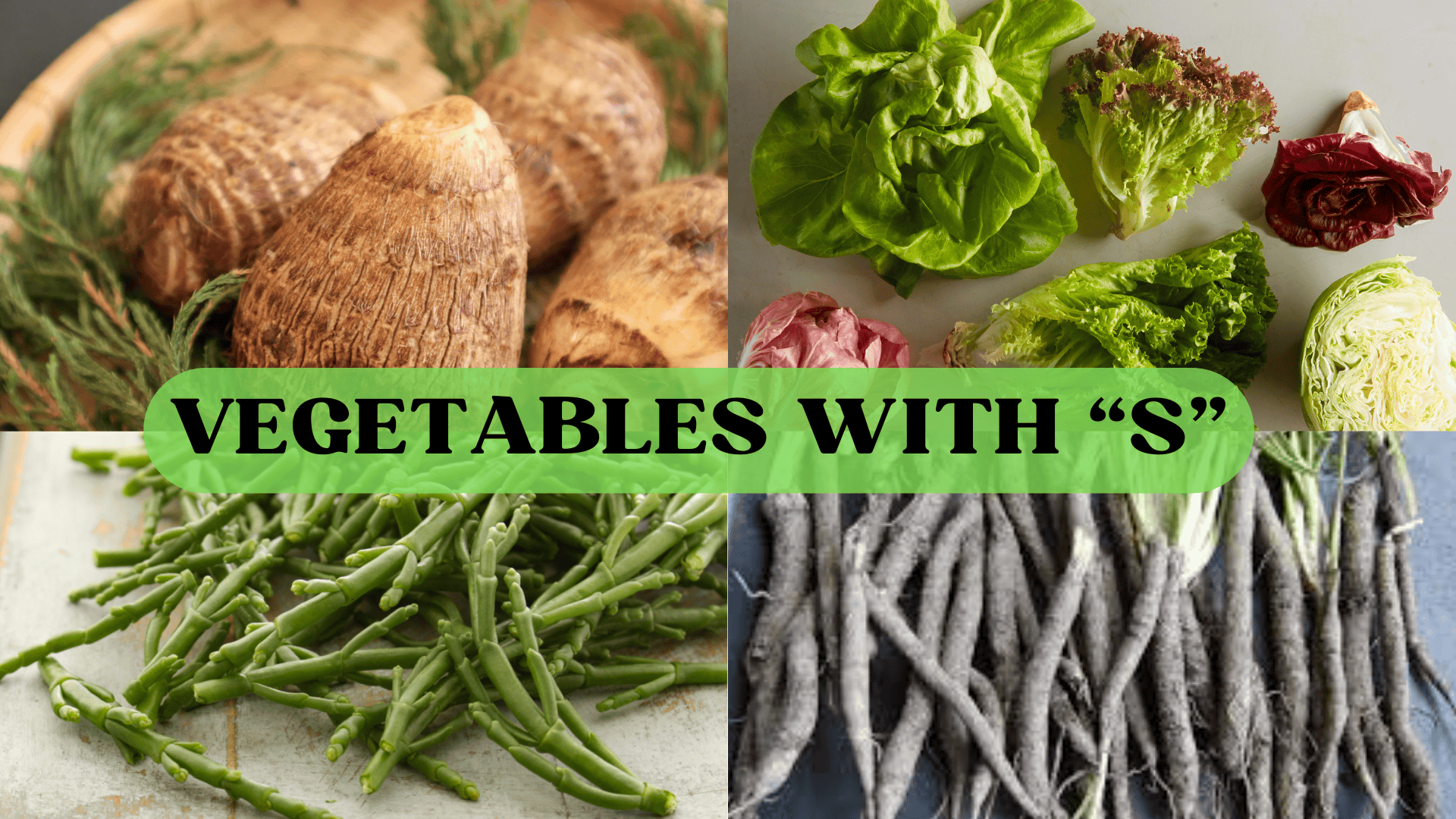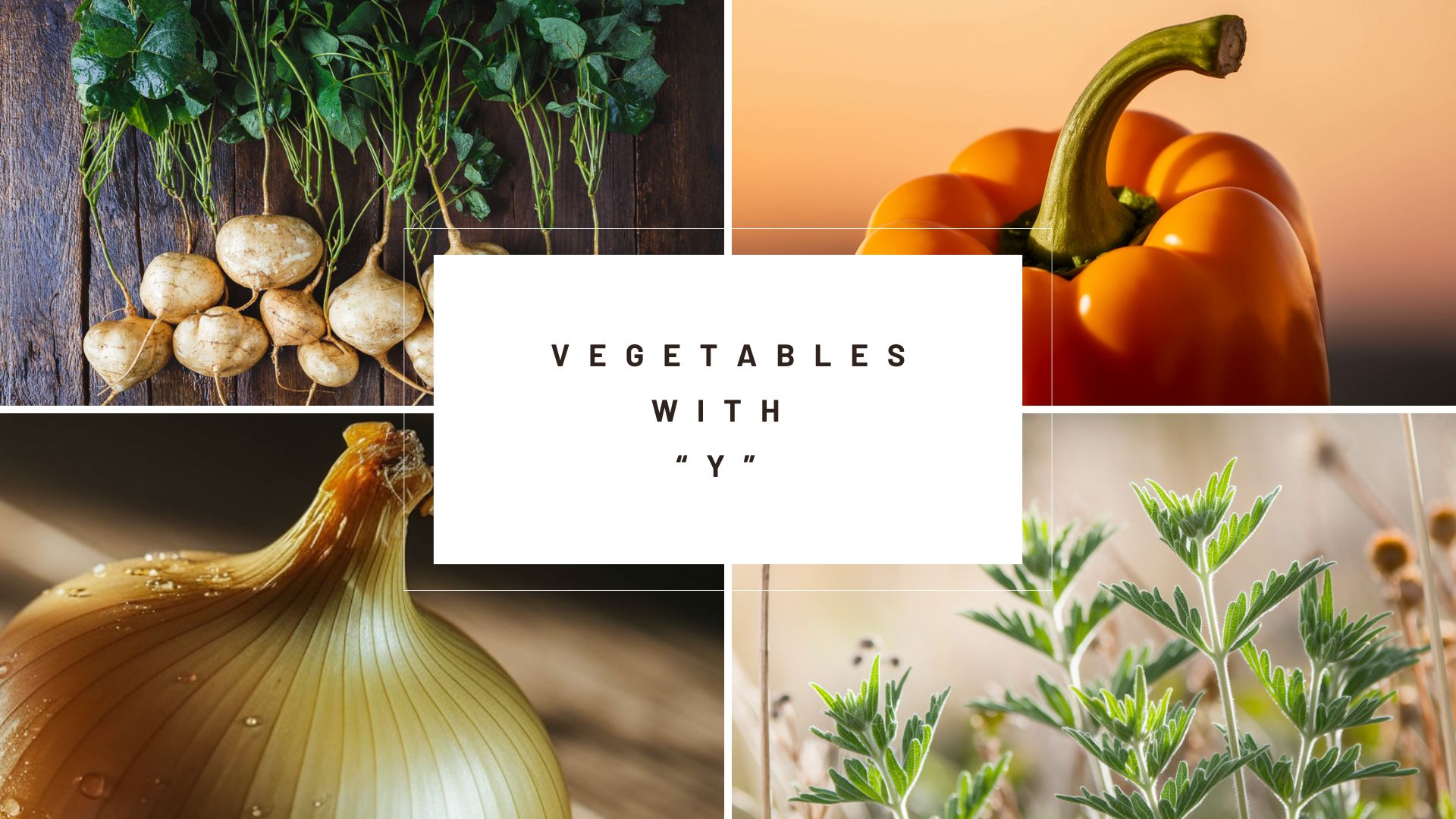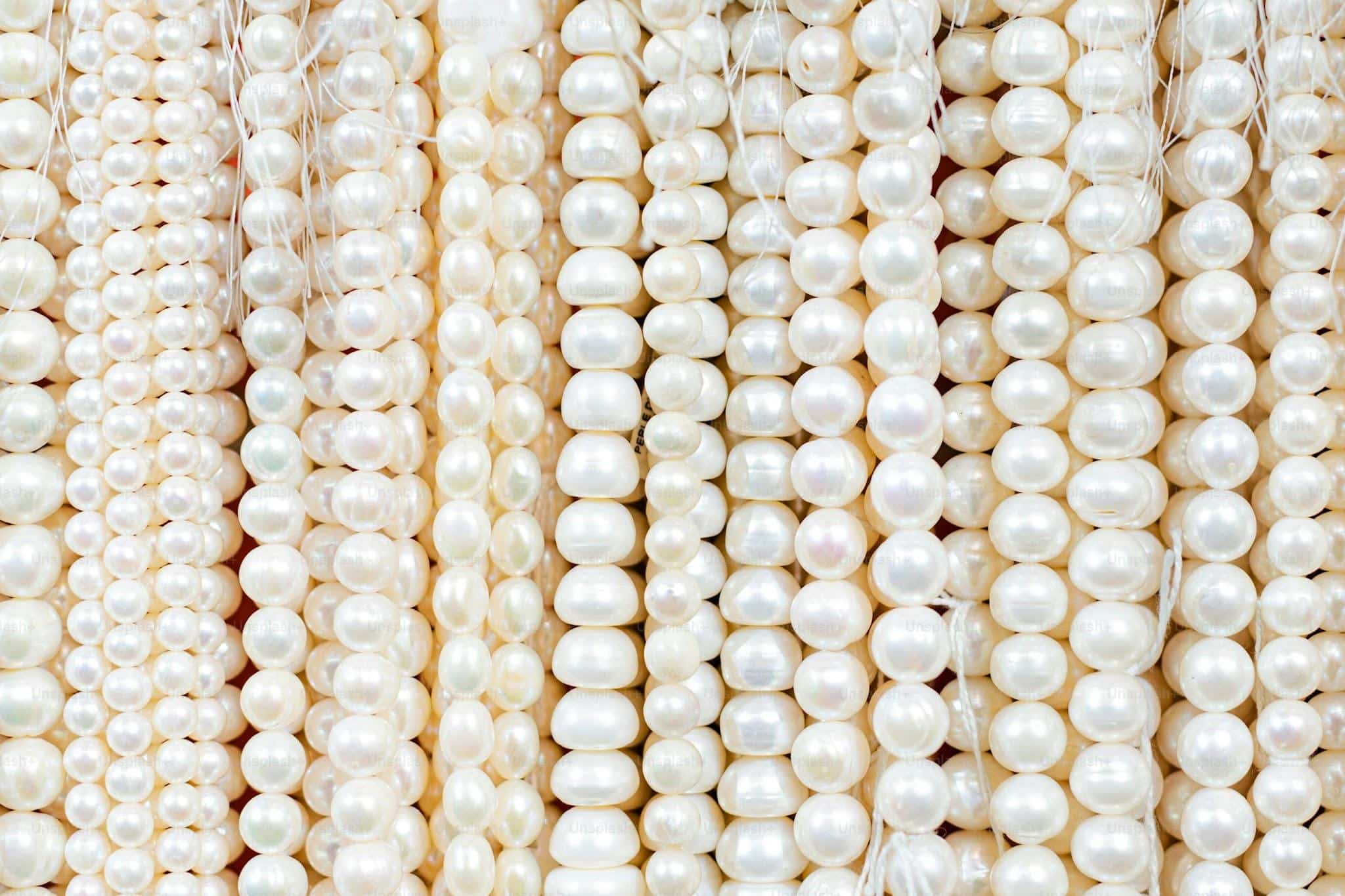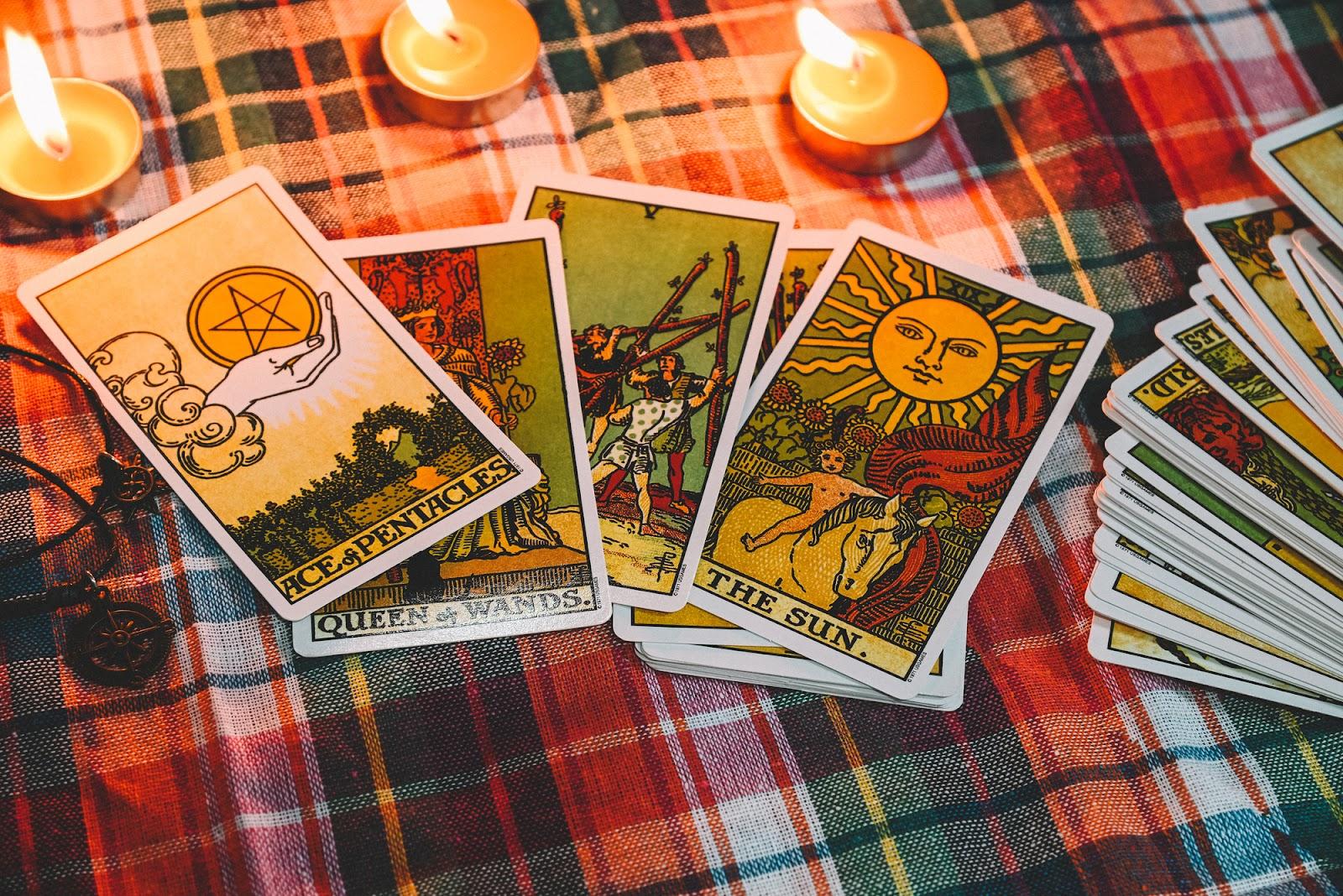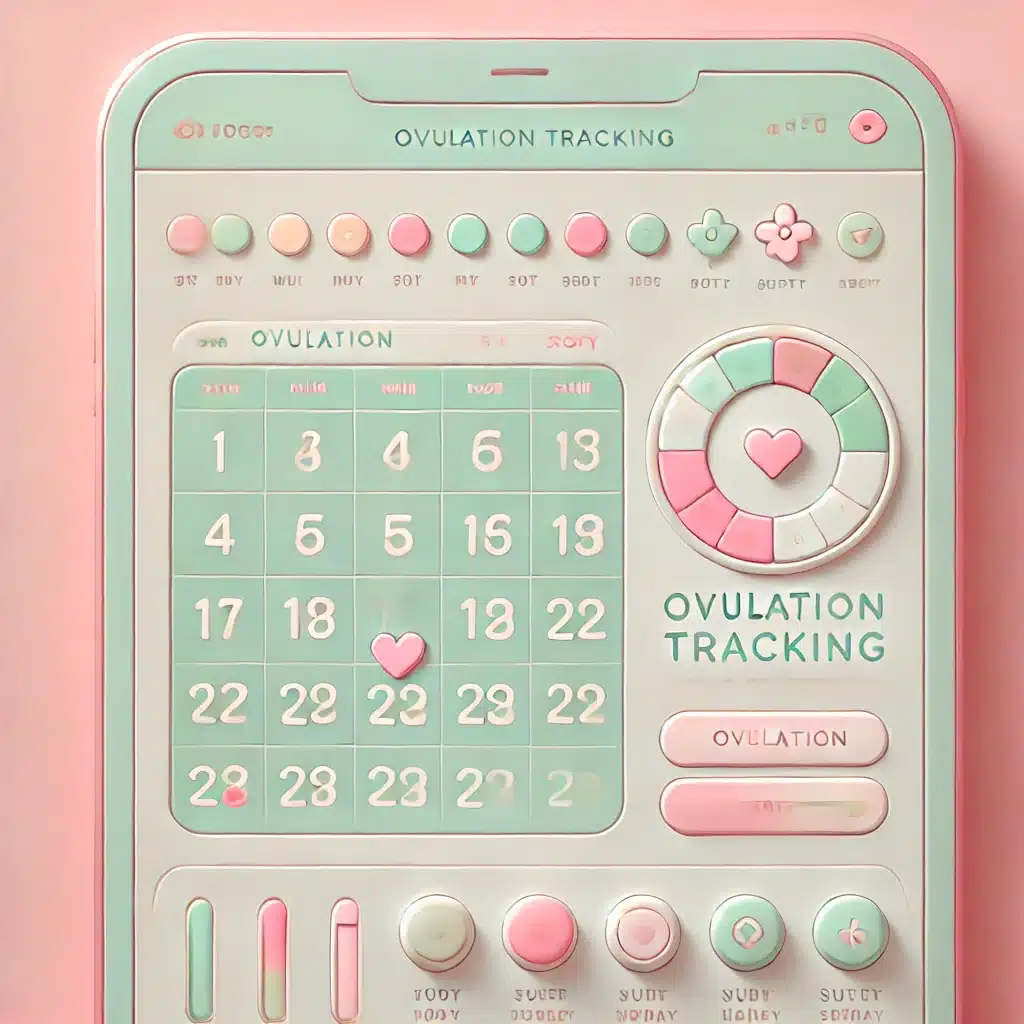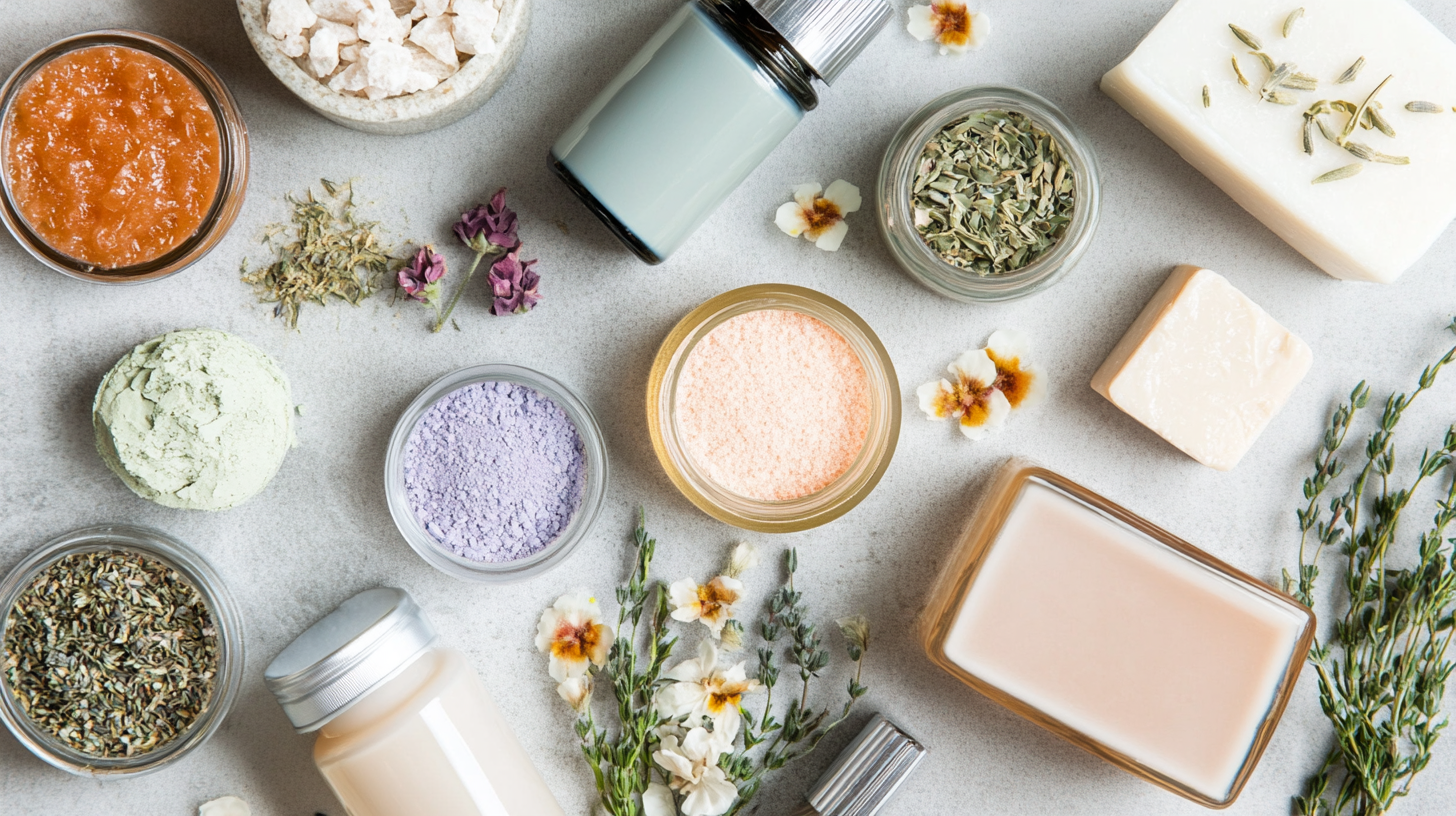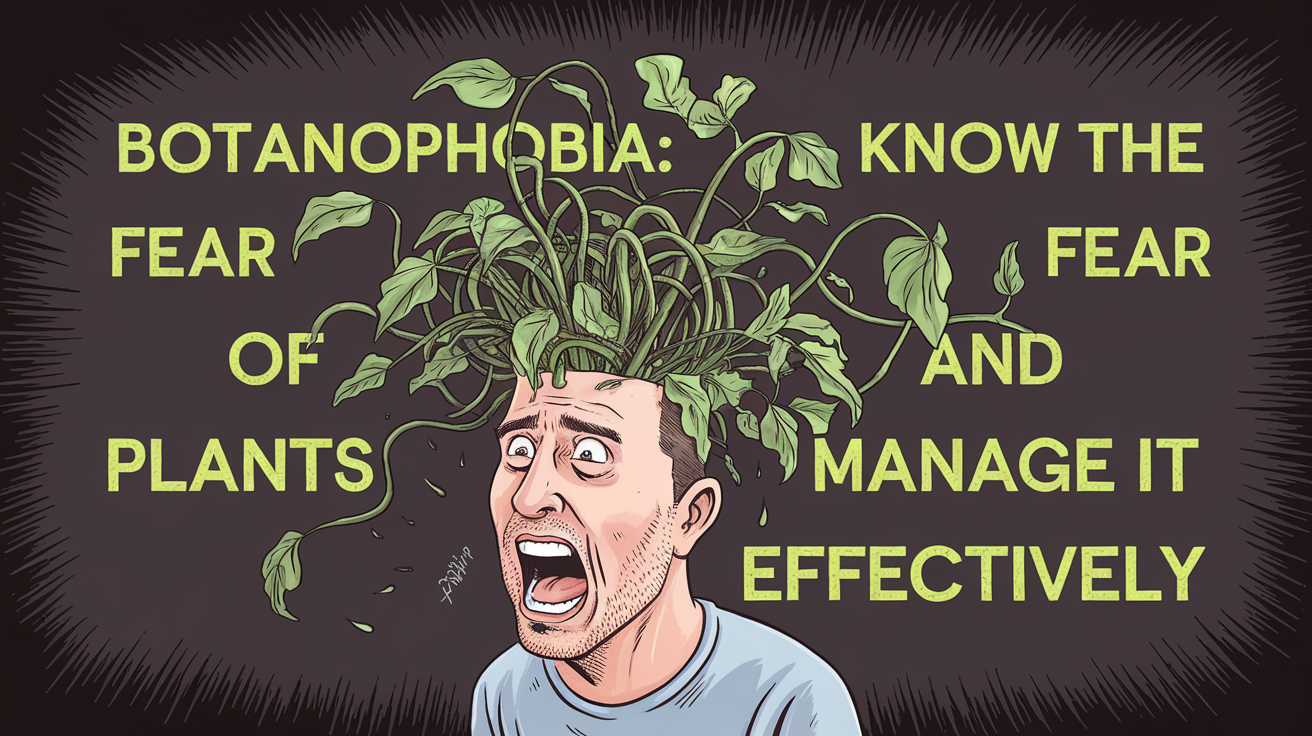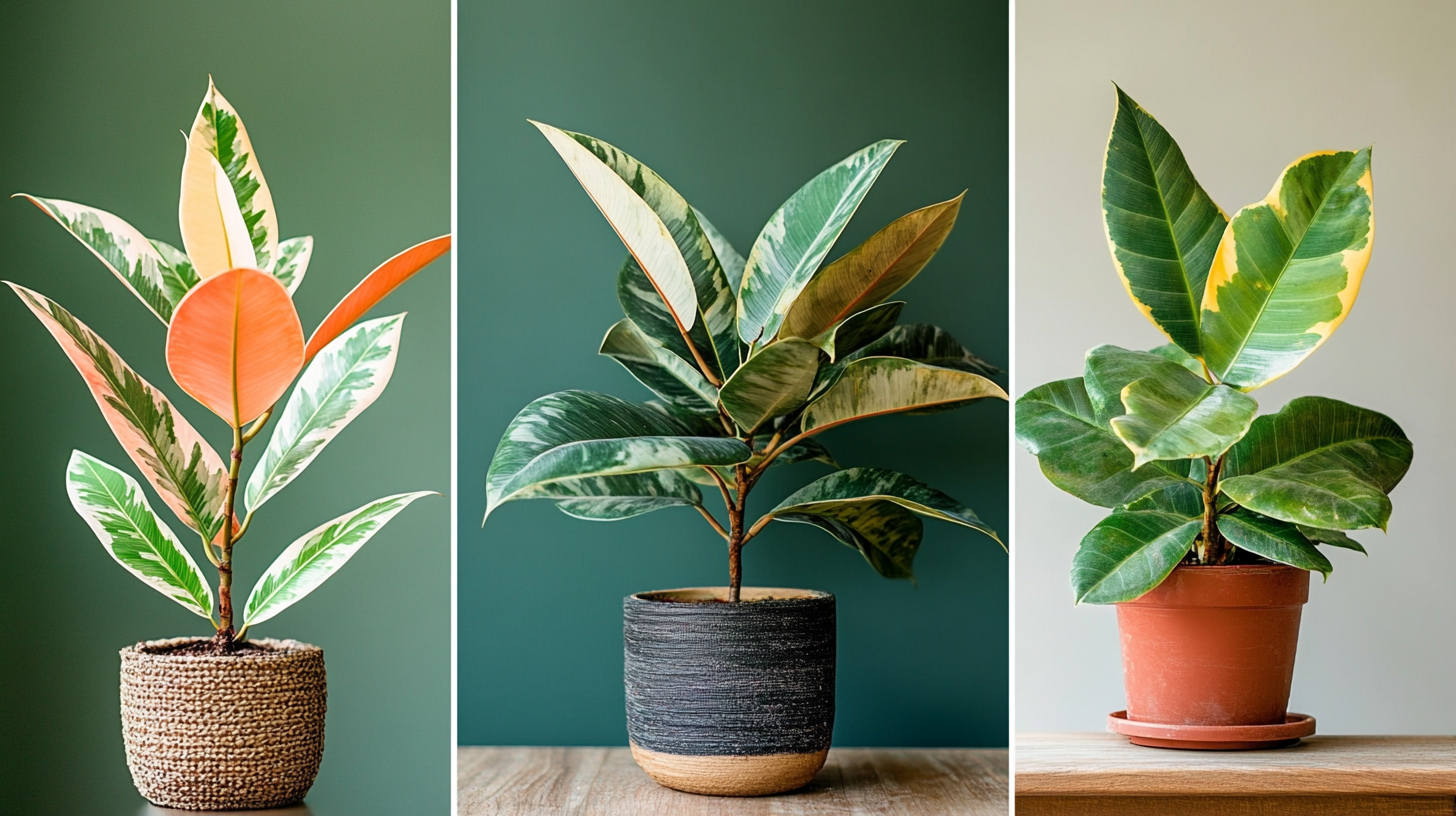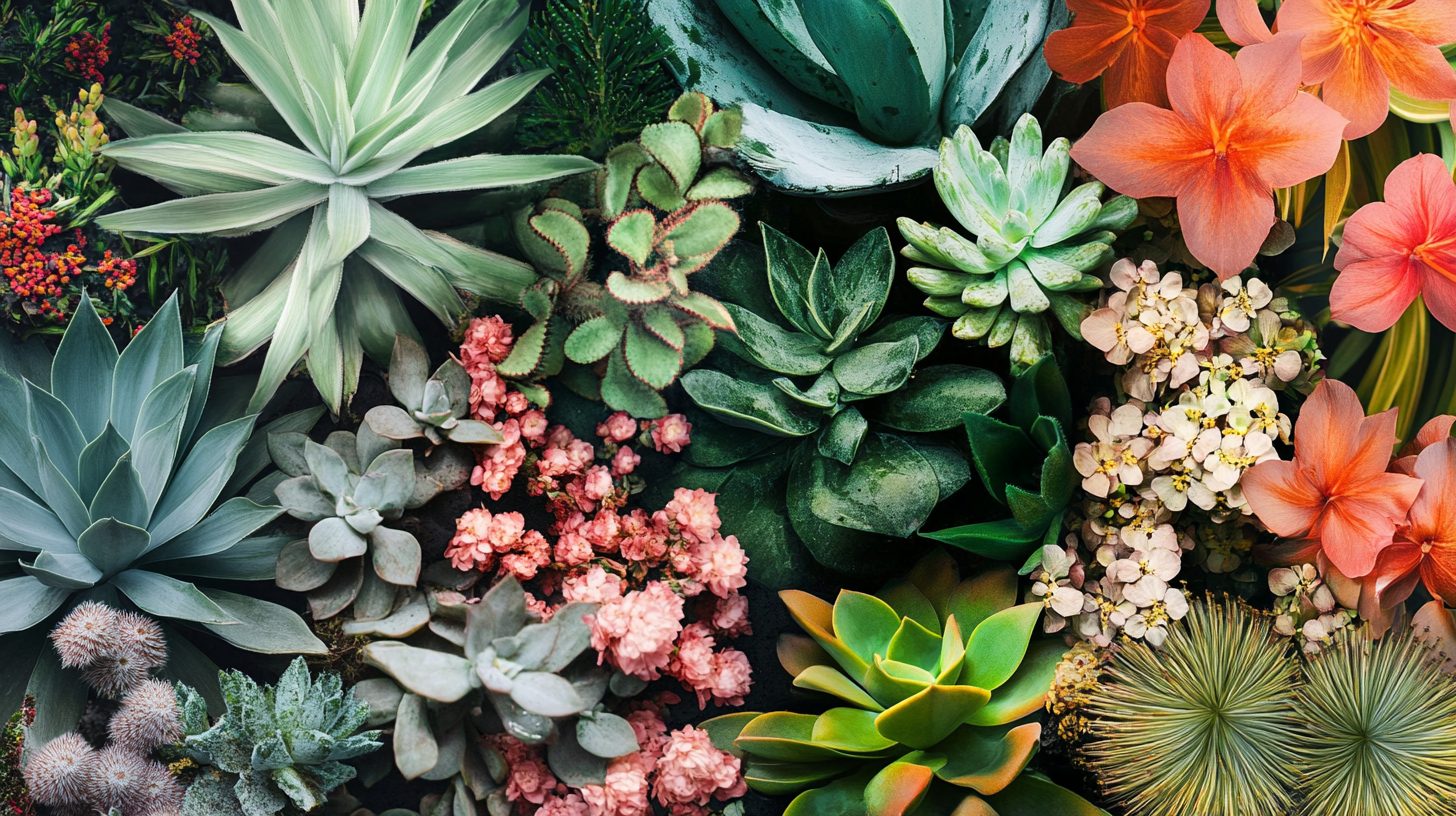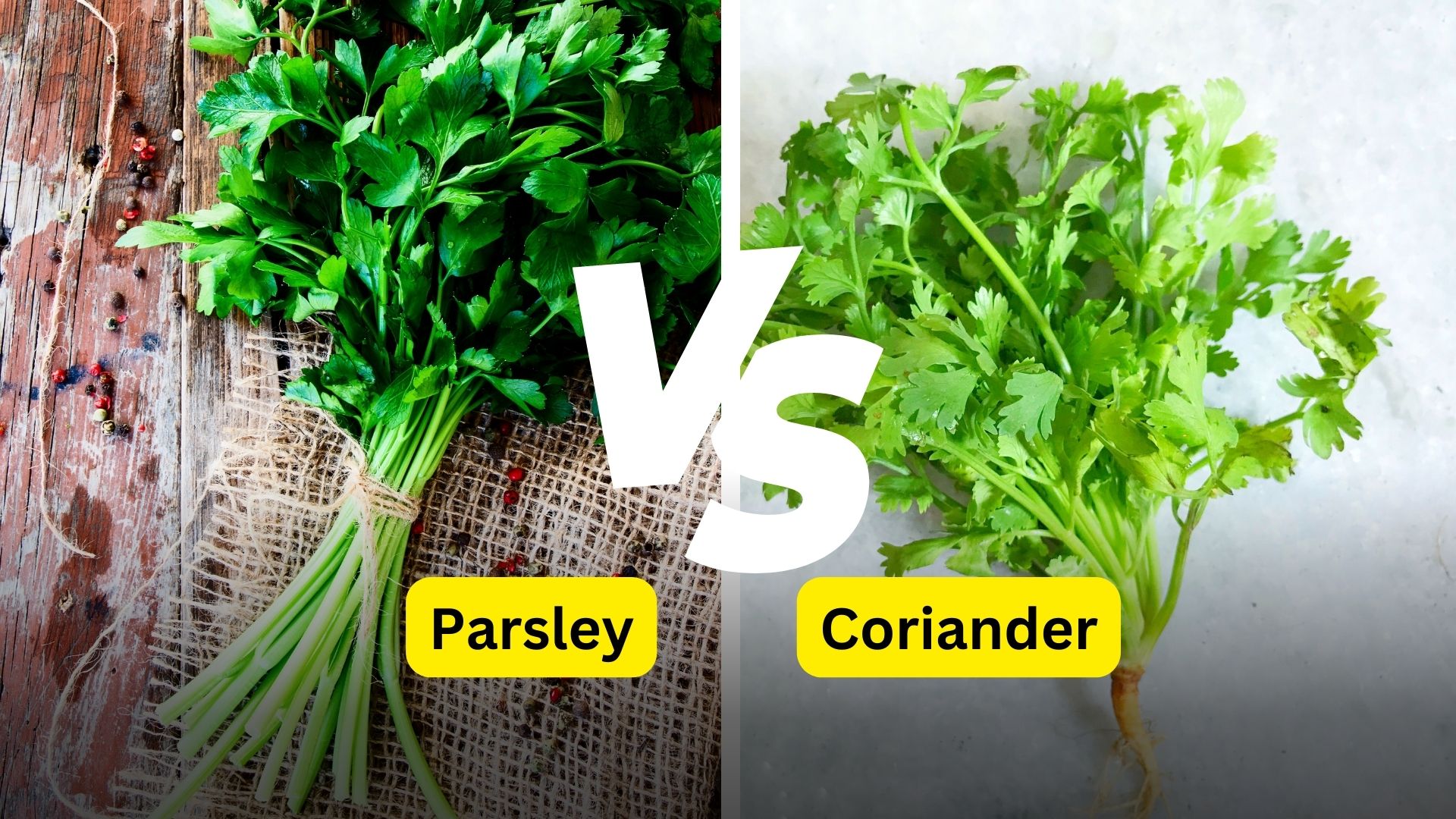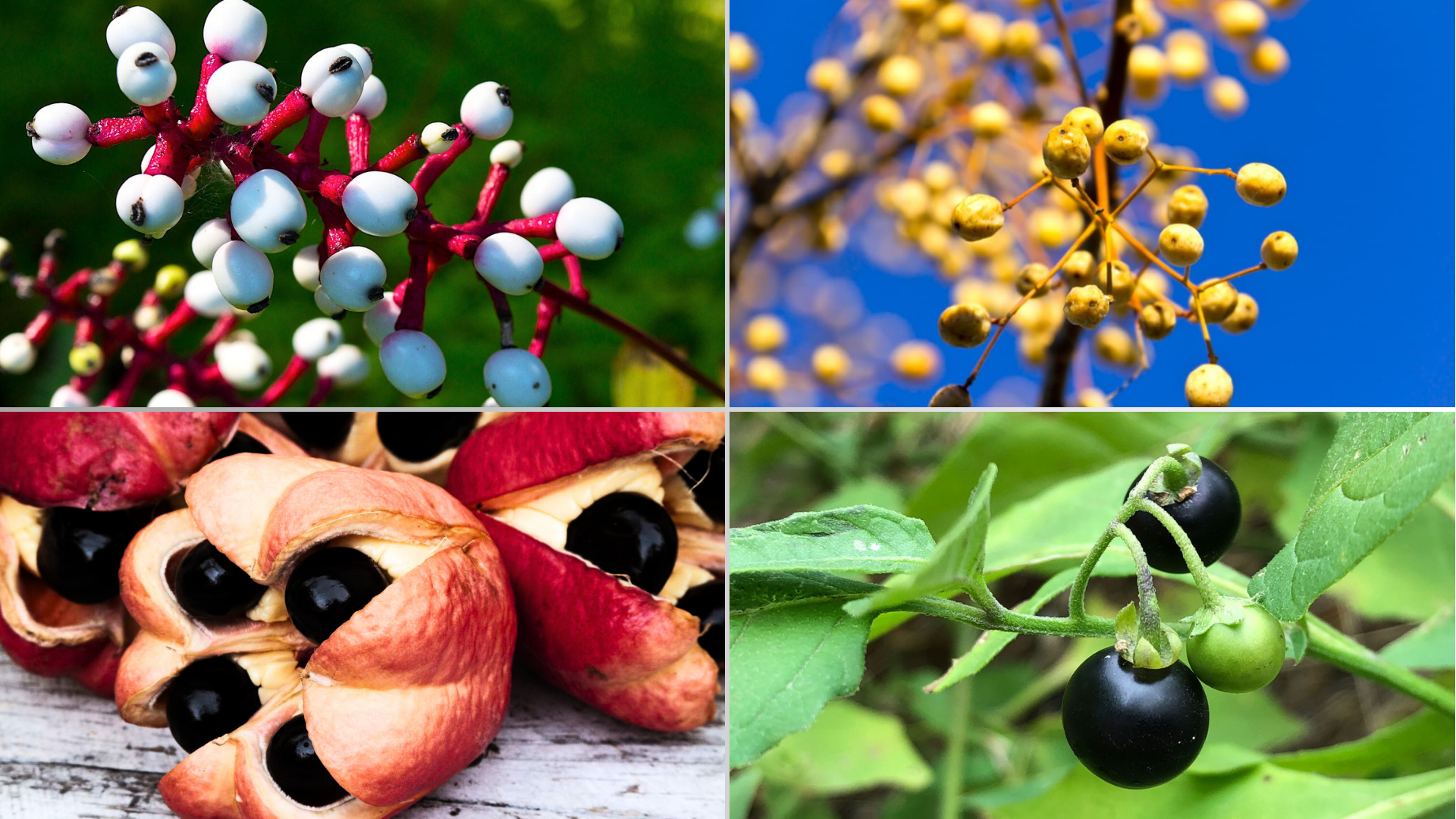
Did you know that some fruits, despite their sweet and appealing appearance, can harm your health?
Many people are unaware of the potential risks lurking in their fruit bowls.
From severe digestive issues to life-threatening illnesses, consuming the wrong fruits can lead to serious consequences. But don’t worry, we’ve got you covered!
In this article, we’ll reveal 27 poisonous fruits you may not have known about. You’ll learn how to identify these harmful fruits, understand their associated risks, and discover safe alternatives to enjoy.
Stay informed and protect yourself and your loved ones from the hidden dangers of poisonous fruits.
Different Varieties of Poisonous Fruits
1. Manchineel Fruit
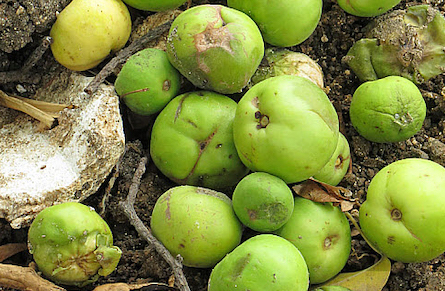
The fruit resembles a small apple with a sweet and aromatic scent.
- Color: Greenish yellow when ripe.
- Why It is Poisonous: It contains a milky sap with phorbol esters and other toxins.
- Side Effects: Severe skin irritation, blistering, burning sensation, and potential blindness if the sap comes in contact with the eyes.
2. Ackee Fruit
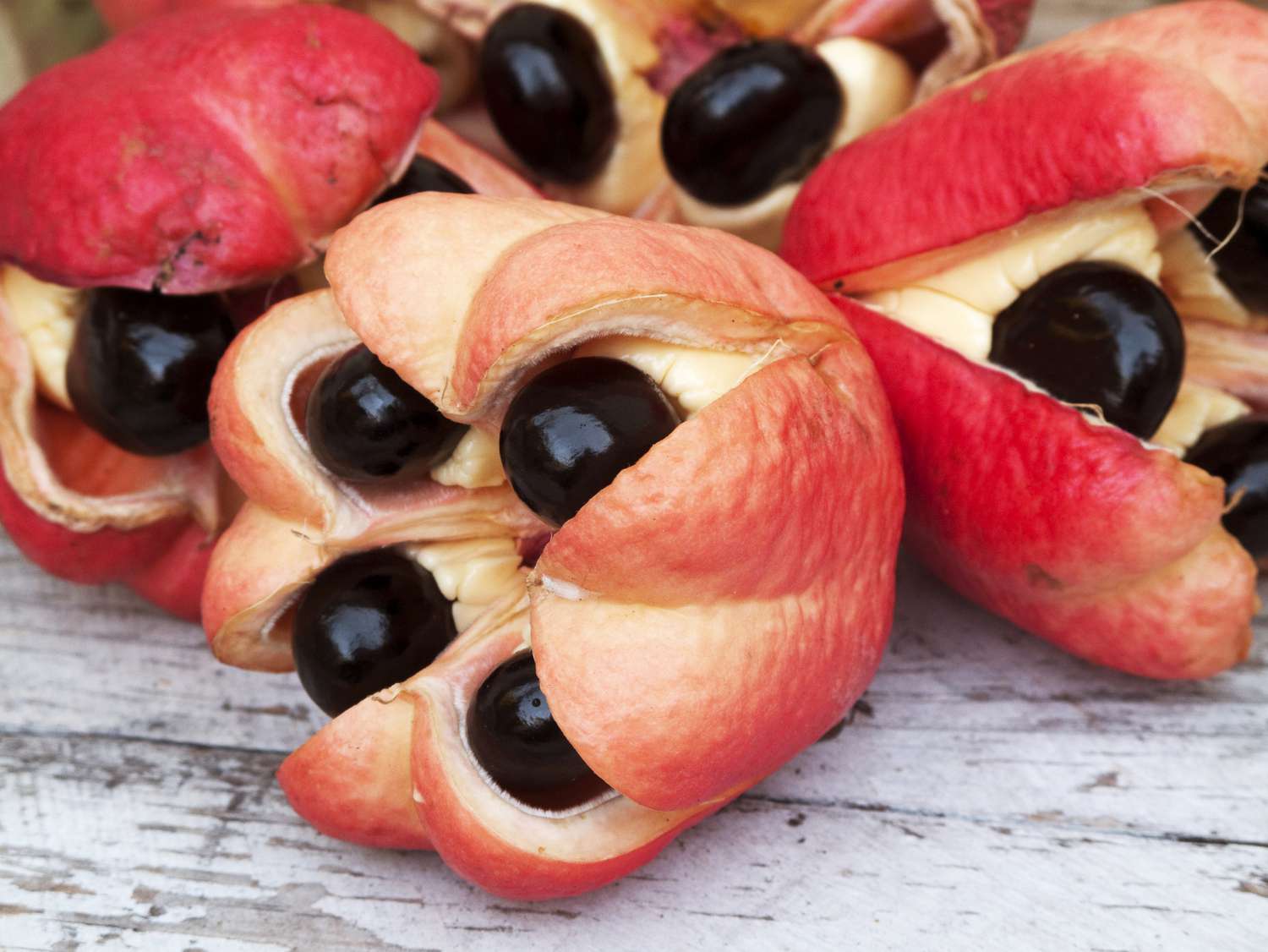
Pear-shaped fruit with a bright red exterior and creamy white flesh. Rich in fatty acids.
- Color: Red when ripe, with black seeds.
- Why It is Poisonous: Unripe fruit and seeds contain hypoglycins A and B, which can cause Jamaican vomiting sickness.
- Side Effects: Vomiting, hypoglycemia, seizures, coma, and even death if consumed before fully ripe.
3. Datura (Devil’s Trumpet) Fruit
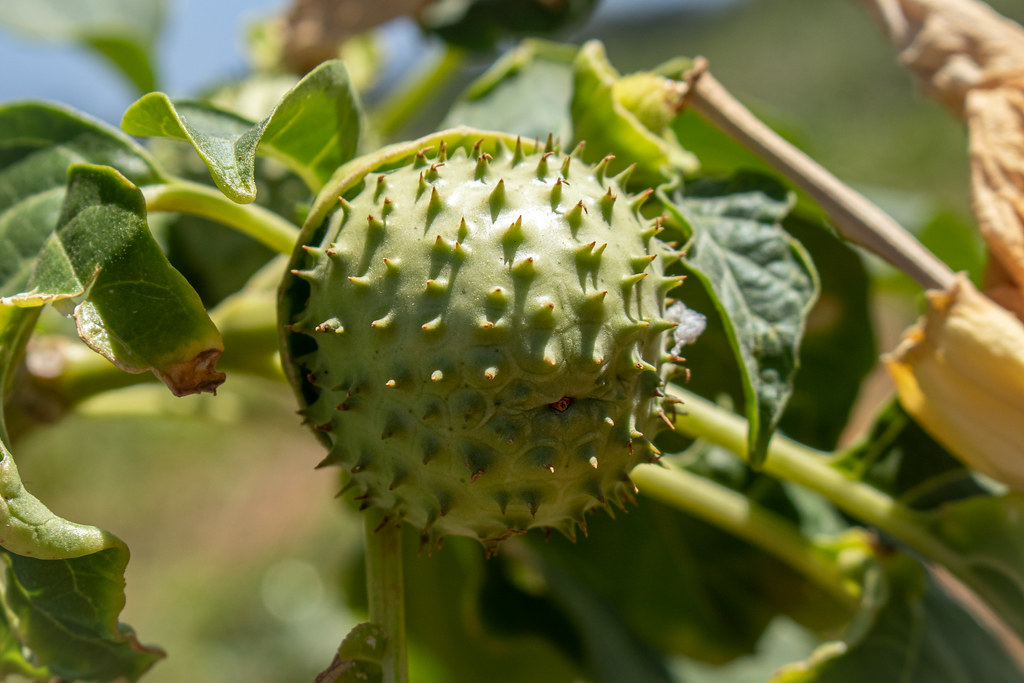
Spiny, egg-shaped fruit. It contains atropine, scopolamine, and hyoscyamine.
- Color: Green, turning brown when ripe.
- Why It is Poisonous: All parts of the plant contain toxic alkaloids.
- Side Effects: Hallucinations, delirium, tachycardia, seizures, and potentially fatal respiratory depression.
4. Jatropha Fruit
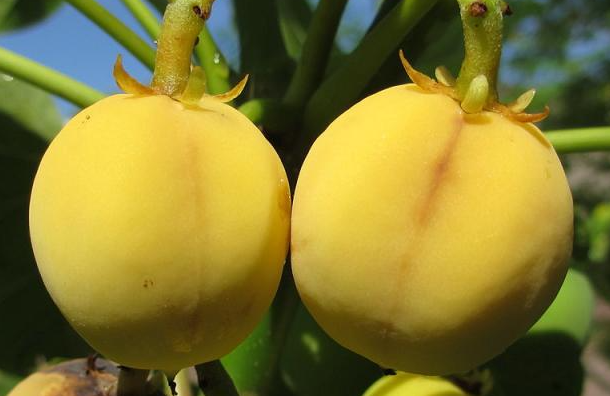
Oval-shaped fruit with 2-3 seeds. Rich in toxalbumin curcin.
- Color: Initially green, turning yellow and then black when ripe.
- Why It is Poisonous: Seeds contain a highly toxic protein called curcin.
- Side Effects: Nausea, vomiting, abdominal pain, and, in severe cases, multiorgan failure and death.
5. Strychnine Tree Fruit
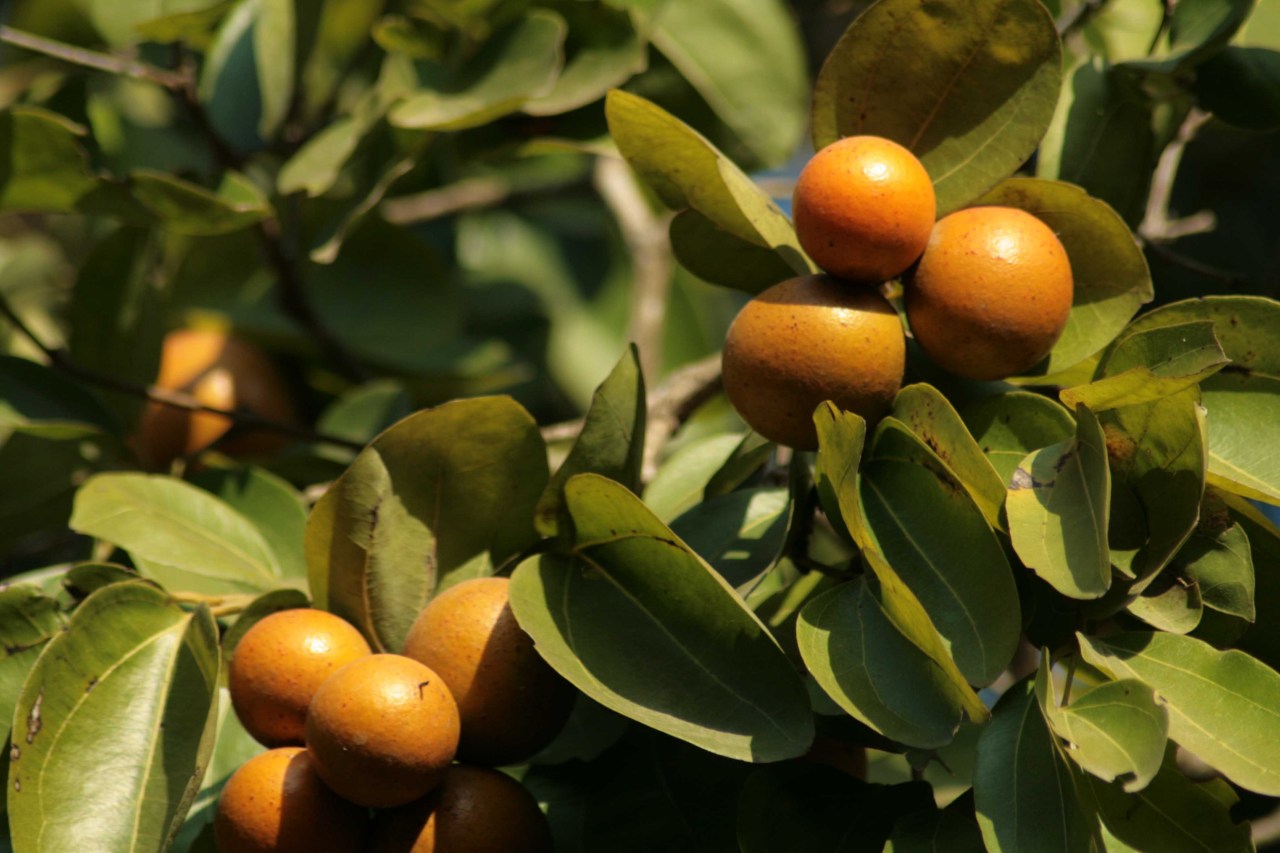
Orange, berry-like fruit with a hard rind and bitter seeds. Contains strychnine alkaloid.
- Color: Orange when ripe.
- Why It is Poisonous: Seeds contain the highly toxic alkaloid strychnine.
- Side Effects: Muscular convulsions, respiratory failure, and death in severe cases.
6. Yew Berries
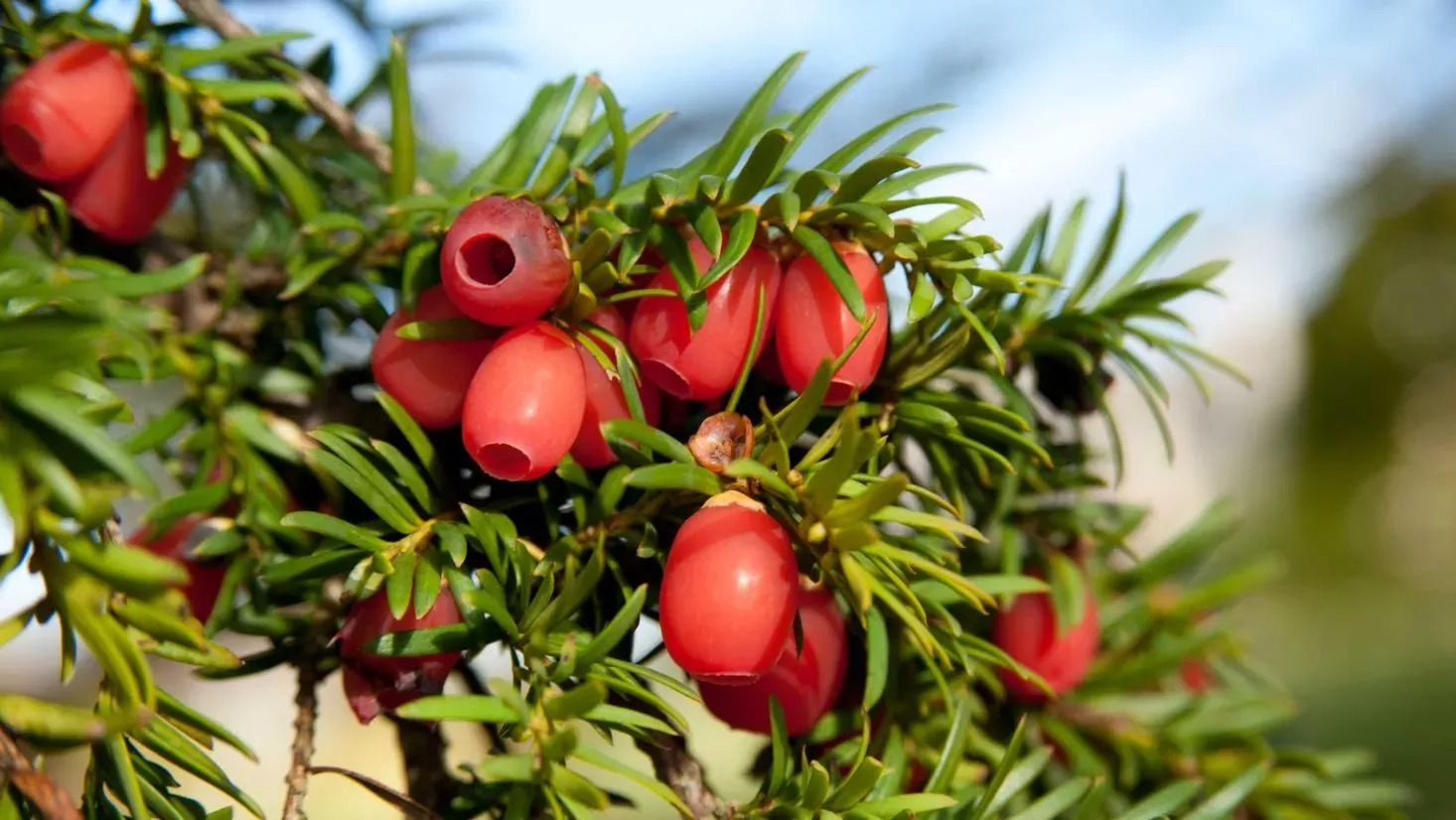
Soft, bright red berry-like fruit (aril) with a single seed. Contains taxine alkaloids.
- Color: Red aril surrounding a brown seed.
- Why It is Poisonous: All parts of the plant, except the aril, contain toxic taxine alkaloids.
- Side Effects: Nausea, vomiting, abdominal pain, dizziness, and potentially fatal heart arrhythmias.
7. Oleander Fruit
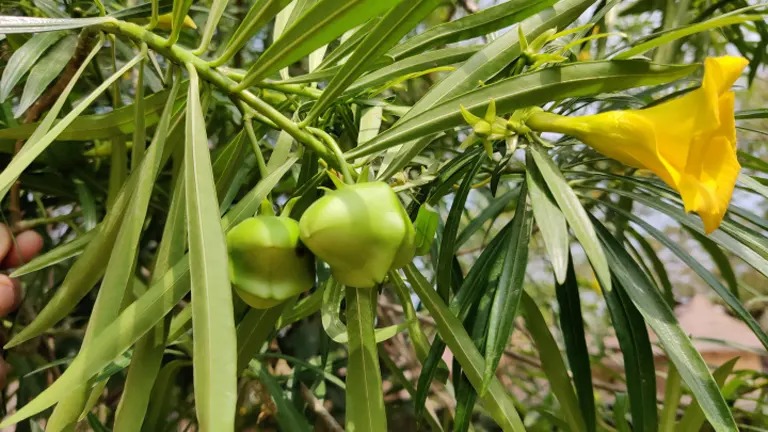
Long, slender pods containing numerous seeds. Rich in cardiac glycosides.
- Color: Green, turning brown as they mature.
- Why It is Poisonous: All parts of the plant contain toxic cardiac glycosides.
- Side Effects: Nausea, vomiting, abdominal pain, irregular heartbeat, and potentially fatal cardiac arrhythmias.
8. Cerbera odollam (Suicide Tree) Fruit
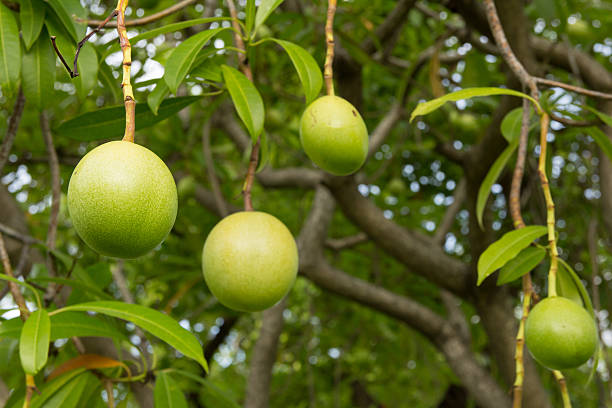
Oval-shaped fruit with a fibrous husk and a single seed. It contains cerberin, a cardiac glycoside.
- Color: Green, turning yellow or red when ripe.
- Why It is Poisonous: The seed contains a potent cardiac glycoside called cerberin.
- Side Effects: Nausea, vomiting, abdominal pain, irregular heartbeat, and potentially fatal cardiac arrest.
9. Aconite (Wolf’s Bane) Berries
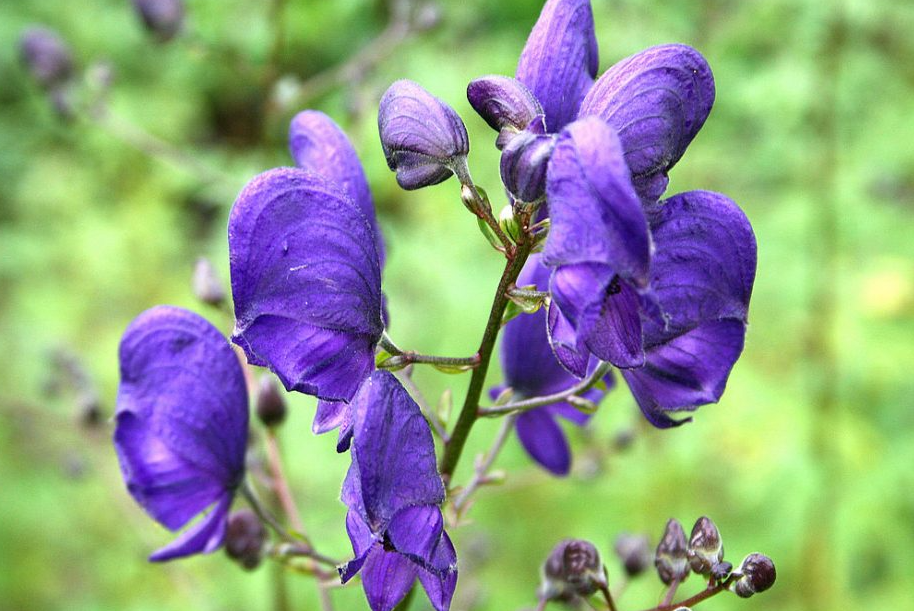
Glossy blackberries arranged in clusters. Contains aconitine alkaloids.
- Color: Black when ripe.
- Why It is Poisonous: All plant parts, including berries, contain toxic aconitine alkaloids.
- Side Effects: Numbness, tingling, nausea, vomiting, abnormal heart rhythm, and potentially fatal respiratory paralysis.
10. Pokeweed Berries
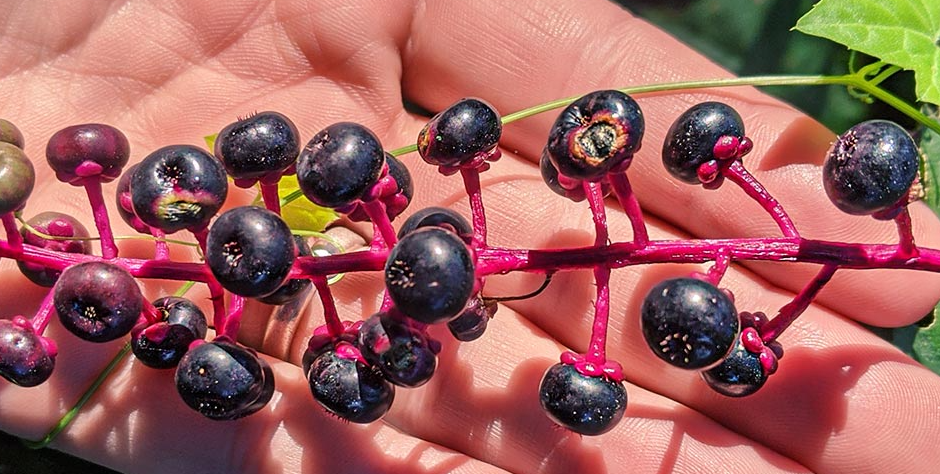
Clusters of dark purple berries. Rich in toxic compounds, including phytolaccatoxin and phytolaccigenin.
- Color: Dark purple when ripe.
- Why It is Poisonous: Berries and other parts of the plant contain toxic compounds.
- Side Effects: Nausea, vomiting, abdominal cramps, diarrhea, and, in severe cases, respiratory failure and death.
11. Deadly Nightshade Berries
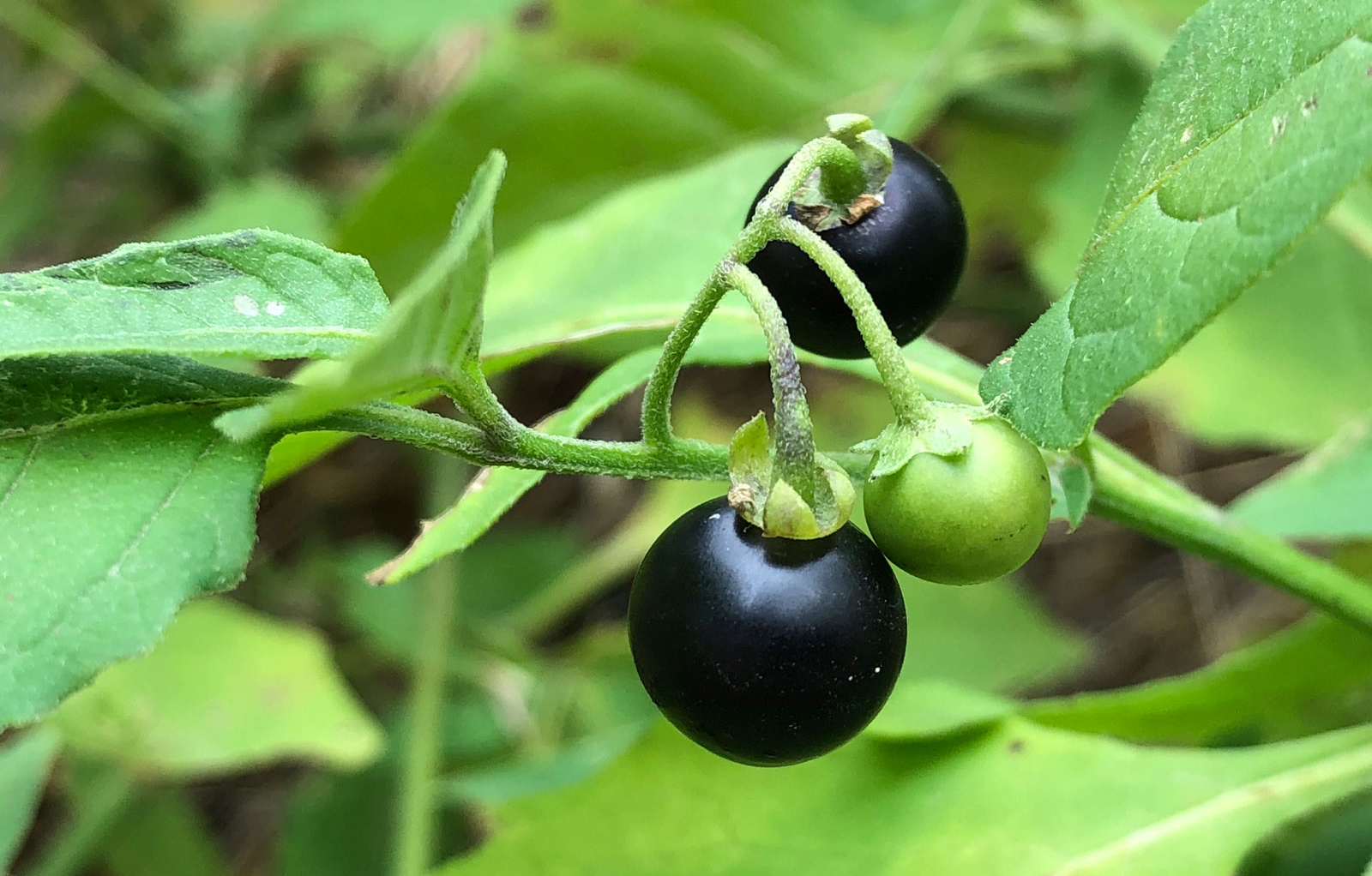
Shiny, black berries that resemble cherries. Contains tropane alkaloids, including atropine and scopolamine.
- Color: Black when ripe.
- Why It is Poisonous: It contains high levels of toxic tropane alkaloids.
- Side Effects: Dilated pupils, blurred vision, dry mouth, hallucinations, delirium, and potentially fatal respiratory failure.
12. White Baneberry
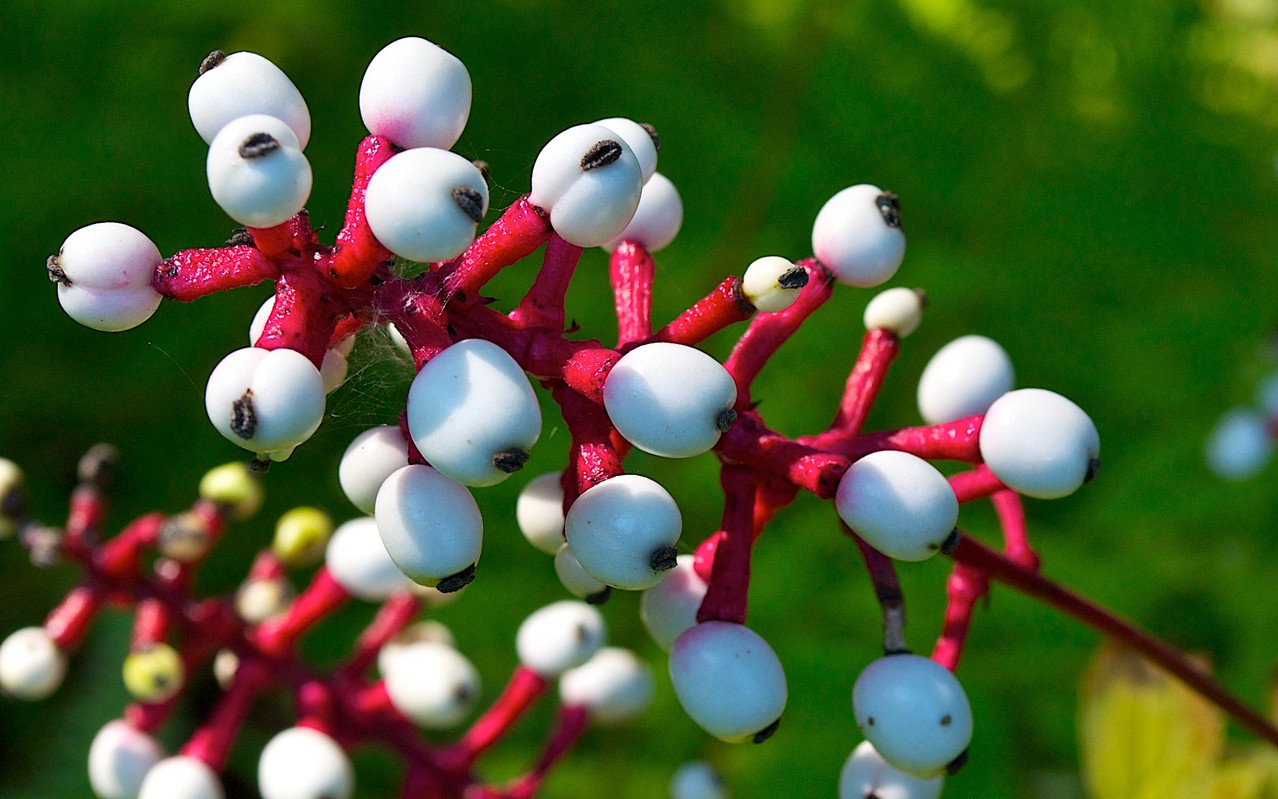
Clusters of white, glossy berries with a black dot at the end. Contains toxic cardiogenic toxins.
- Color: White with a black dot.
- Why It is Poisonous: It contains cardiogenic toxins that affect the heart.
- Side Effects: Nausea, vomiting, dizziness, headache, and potentially fatal cardiac arrest.
13. Horsenettle Fruit
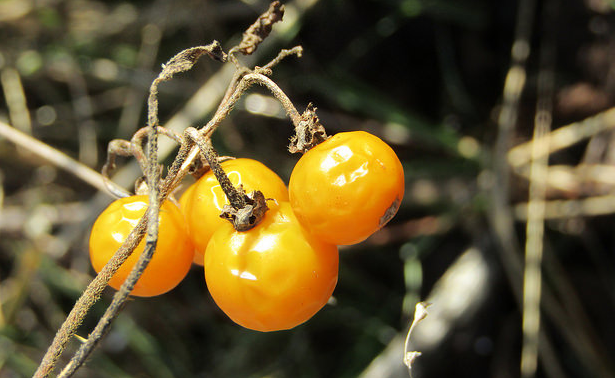
Small, yellow berries enclosed in a papery husk. Contains toxic alkaloids, including solanine.
- Color: Yellow when ripe.
- Why It is Poisonous: It contains toxic alkaloids that can cause digestive and neurological issues.
- Side Effects: Nausea, vomiting, abdominal pain, headache, and, in severe cases, respiratory depression and death.
14. Bittersweet Nightshade Berries
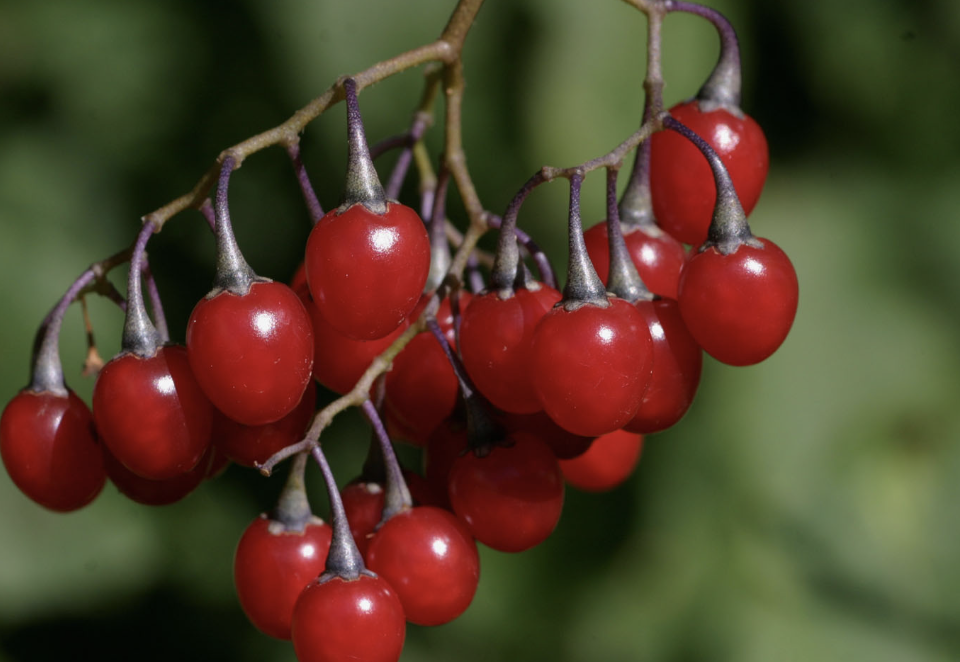
Clusters of bright red berries. It contains a solanine alkaloid.
- Color: Bright red when ripe.
- Why It is Poisonous: It contains the toxic alkaloid solanine.
- Side Effects: Nausea, vomiting, abdominal pain, headache, and, in severe cases, respiratory depression and death.
15. Ivy Berries
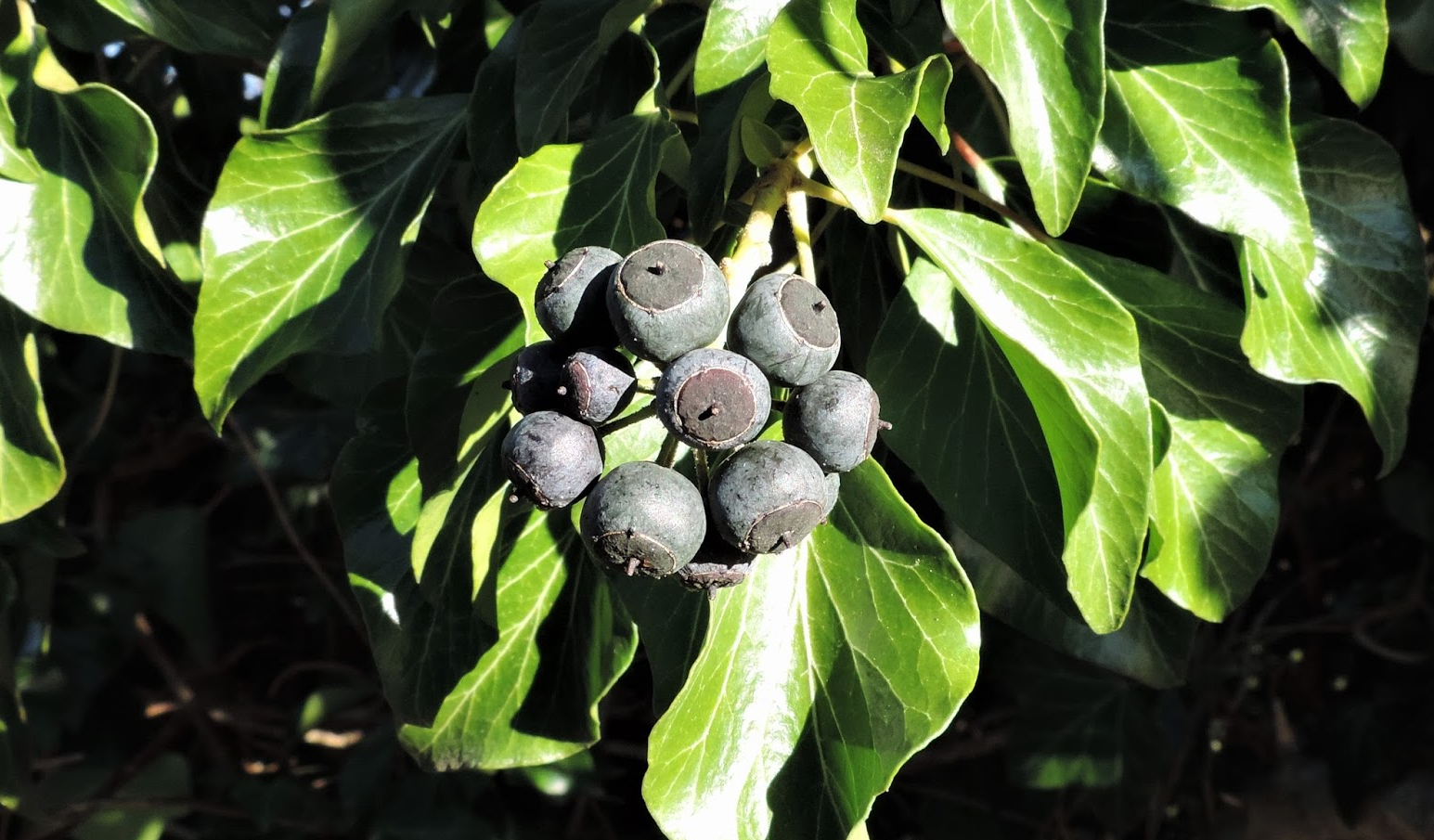
Small, round, black berries arranged in clusters. Contains hederin, a saponic glycoside.
- Color: Black when ripe.
- Why It is Poisonous: It contains the toxic compound hederin.
- Side Effects: Nausea, vomiting, abdominal pain, diarrhea, and, in severe cases, breathing difficulties and coma.
16. Moonseed Fruit
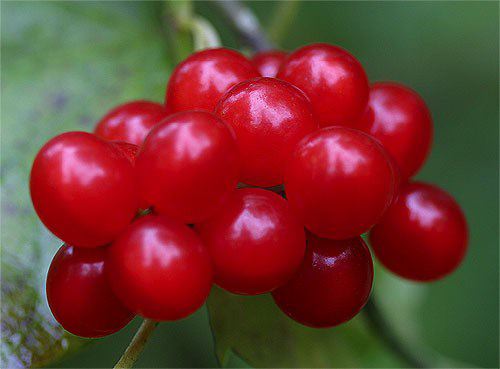
Grape-like clusters of dark blue or purple berries. Contain dauricine, a toxic alkaloid.
- Color: Dark blue or purple when ripe.
- Why It is Poisonous: It contains the toxic alkaloid dauricine.
- Side Effects: Nausea, vomiting, headache, confusion, and in severe cases, respiratory failure and death.
17. Mezereon Berries
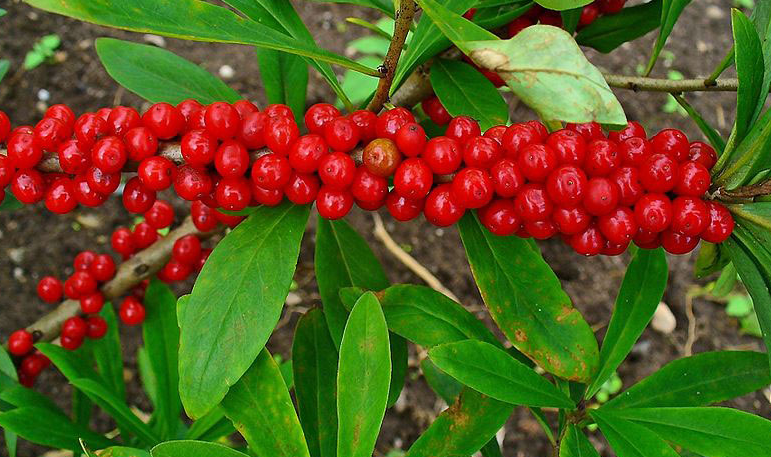
Bright red berries are arranged in clusters along the stems. Contains mezerein, a toxic compound.
- Color: Bright red when ripe.
- Why It is Poisonous: It contains the toxic compound mezerein.
- Side Effects: Burning sensation in the mouth and throat, nausea, vomiting, abdominal pain, and, in severe cases, kidney damage and death.
18. Cotoneaster Berries
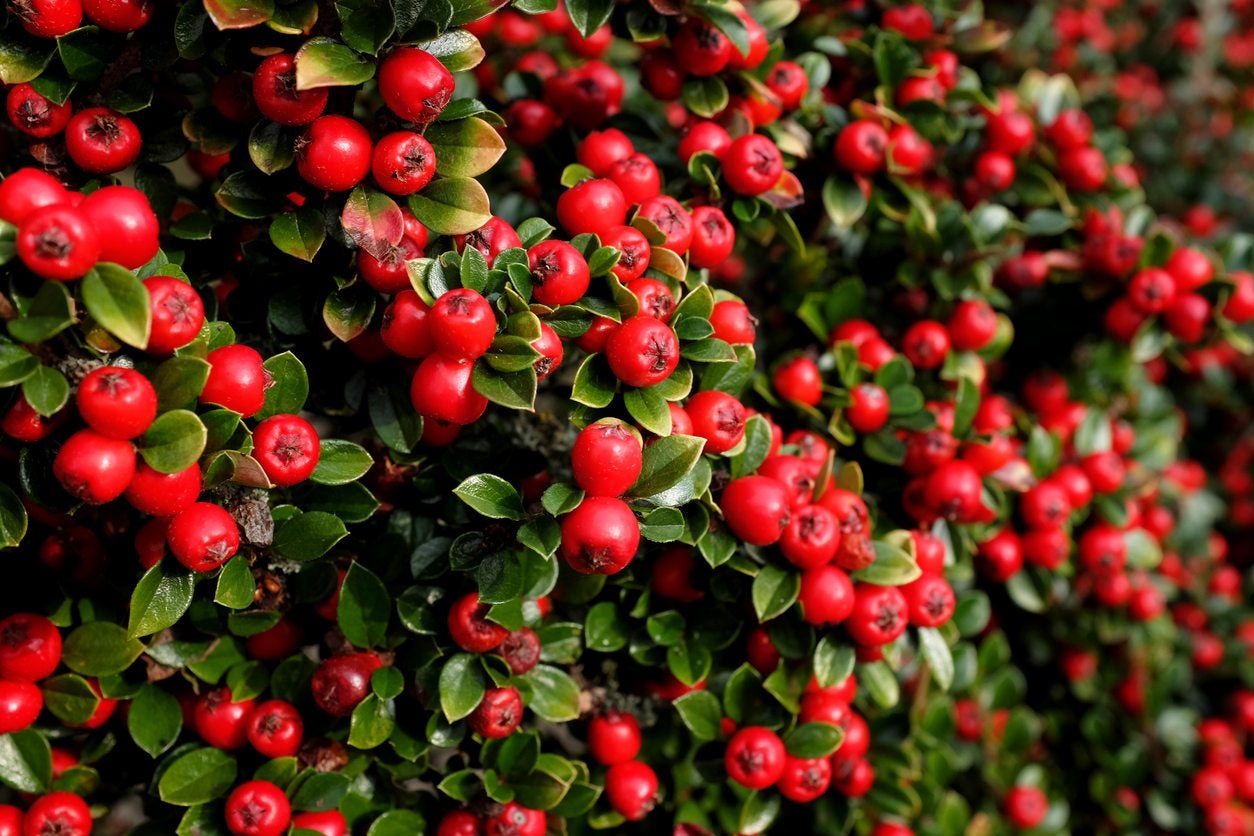
Small, round, bright red berries. Contain cyanogenic glycosides.
- Color: Bright red when ripe.
- Why It is Poisonous: It contains cyanogenic glycosides, which can release cyanide when ingested.
- Side Effects: Nausea, vomiting, dizziness, confusion, and in severe cases, respiratory failure and death.
19. Privet Berries
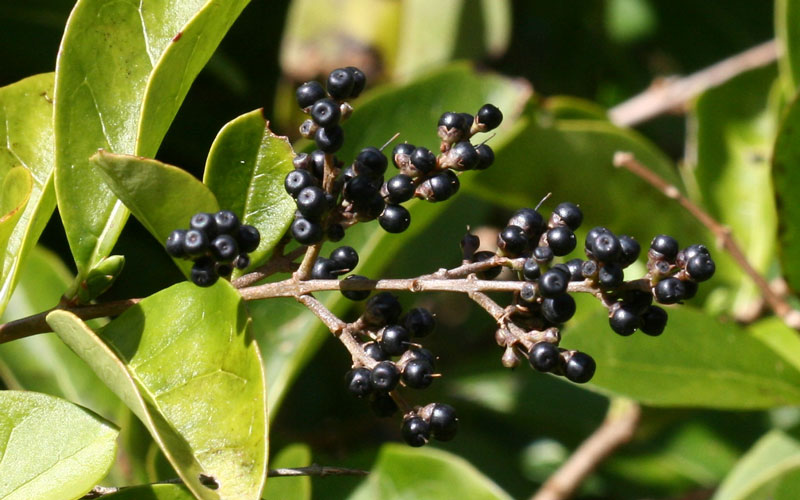
Clusters of small, glossy black berries. Contains ligustrin, syringin, and other toxic compounds.
- Color: Black when ripe.
- Why It is Poisonous: It contains toxic compounds that can cause digestive and neurological issues.
- Side Effects: Nausea, vomiting, abdominal pain, diarrhea, and, in severe cases, seizures and respiratory failure.
20. Virginia Creeper Berries
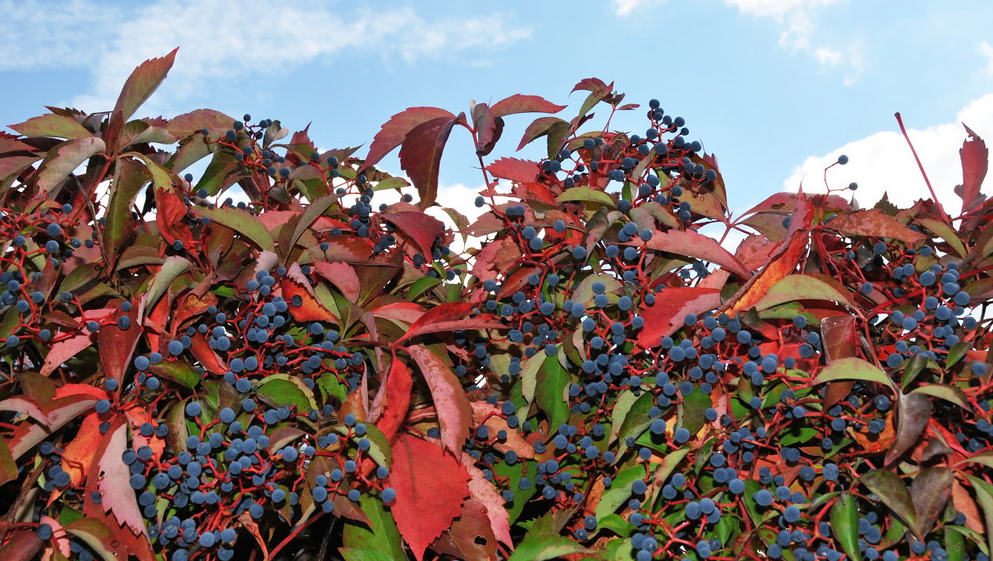
Clusters of small, dark blue berries. Contains oxalic acid and other toxic compounds.
- Color: Dark blue when ripe.
- Why It is Poisonous: It contains oxalic acid and other toxic compounds that can cause kidney damage.
- Side Effects: Burning sensation in the mouth and throat, nausea, vomiting, abdominal pain, and in severe cases, kidney failure.
21. Chinaberry Fruit
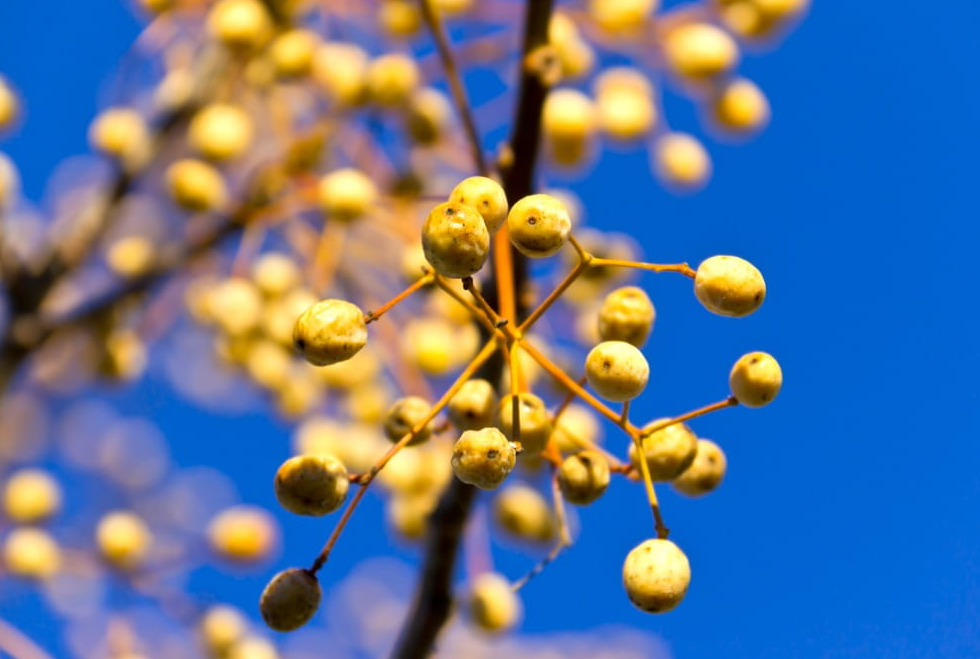
Round, yellow drupes containing a single seed. Contains tetranortriterpene neurotoxins.
- Color: Yellow when ripe.
- Why It is Poisonous: Fruit and seeds contain tetranortriterpene neurotoxins.
- Side Effects: Nausea, vomiting, diarrhea, drowsiness, seizures, and in severe cases, respiratory failure and death.
22. Honeysuckle Berries
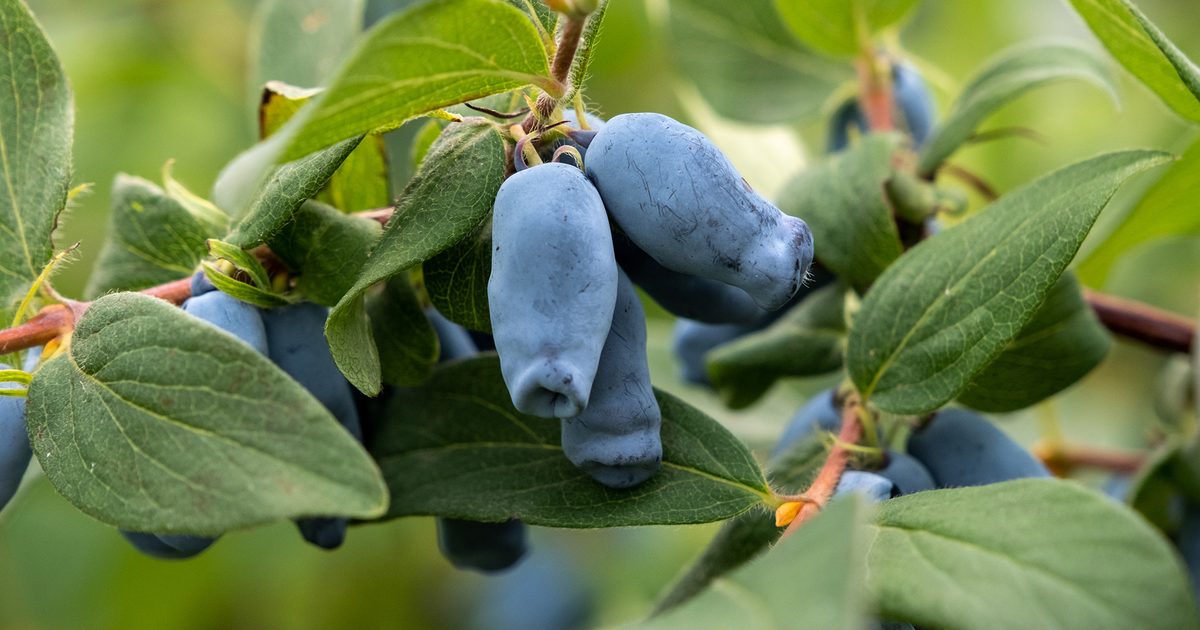
Small, round, red, or black berries. Some species contain saponins and other toxic compounds.
- Color: Red or black when ripe.
- Why It is Poisonous: Some species of honeysuckle berries contain toxic saponins and other compounds.
- Side Effects: Nausea, vomiting, diarrhea, and, in severe cases, respiratory distress and coma.
23. Cherry Laurel Fruit
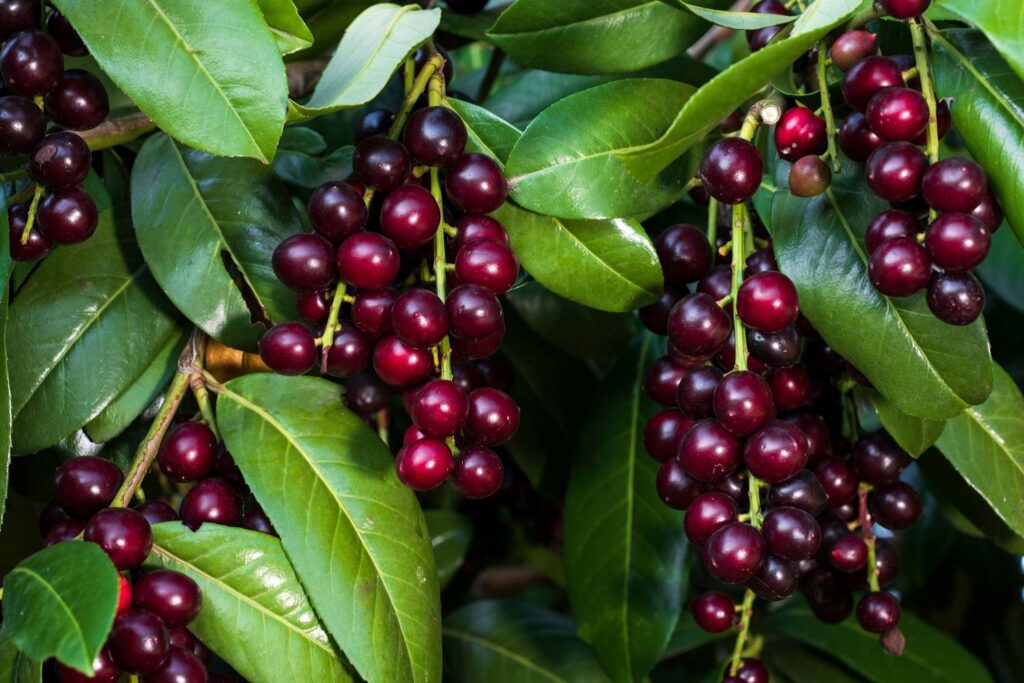
Small, black drupes containing a single seed. Contain cyanogenic glycosides.
- Color: Black when ripe.
- Why It is Poisonous: Fruit and leaves contain cyanogenic glycosides, which can release cyanide when ingested.
- Side Effects: Nausea, vomiting, dizziness, confusion, and, in severe cases, respiratory failure and death.
24. Wonderberry
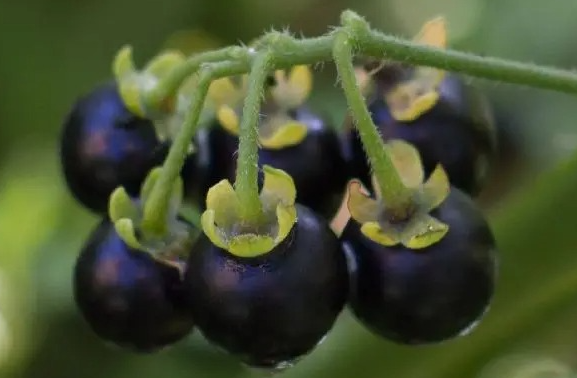
Small, purple berries resembling blueberries. Contains solanine alkaloid.
- Color: Purple when ripe.
- Why It is Poisonous: It contains the toxic alkaloid solanine.
- Side Effects: Nausea, vomiting, abdominal pain, headache, and, in severe cases, respiratory depression and death.
25. Melia azedarach (White Cedar) Fruit
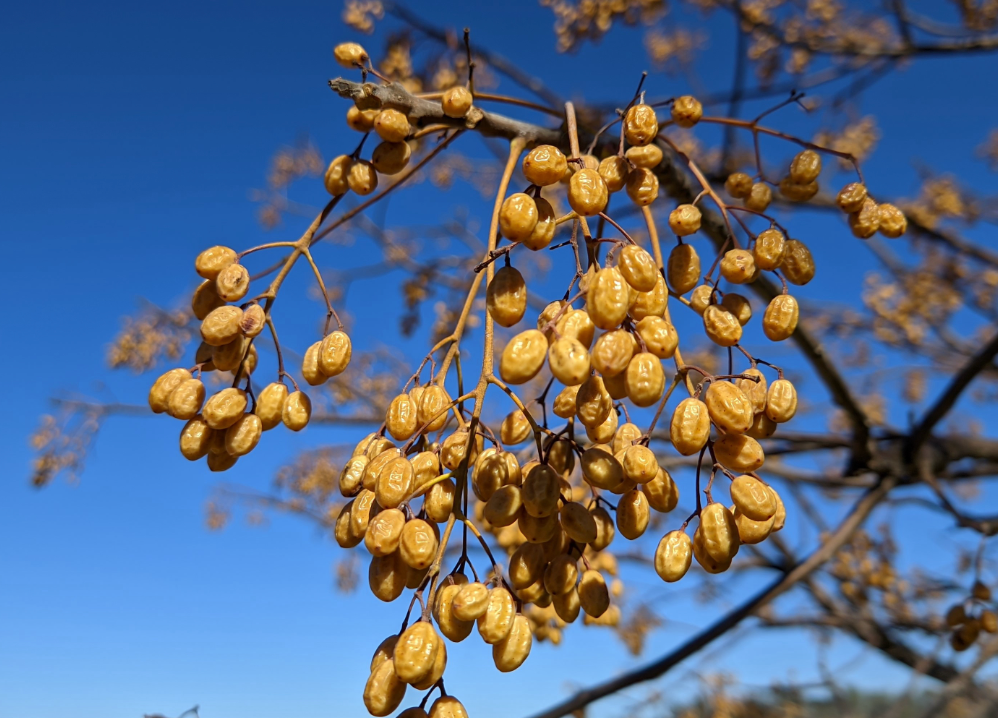
Round, yellow drupes containing a single seed. Contains tetranortriterpene neurotoxins.
- Color: Yellow when ripe.
- Why It is Poisonous: Fruit and seeds contain tetranortriterpene neurotoxins.
- Side Effects: Nausea, vomiting, diarrhea, drowsiness, seizures, and in severe cases, respiratory failure and death.
26. Yellow Star Fruit
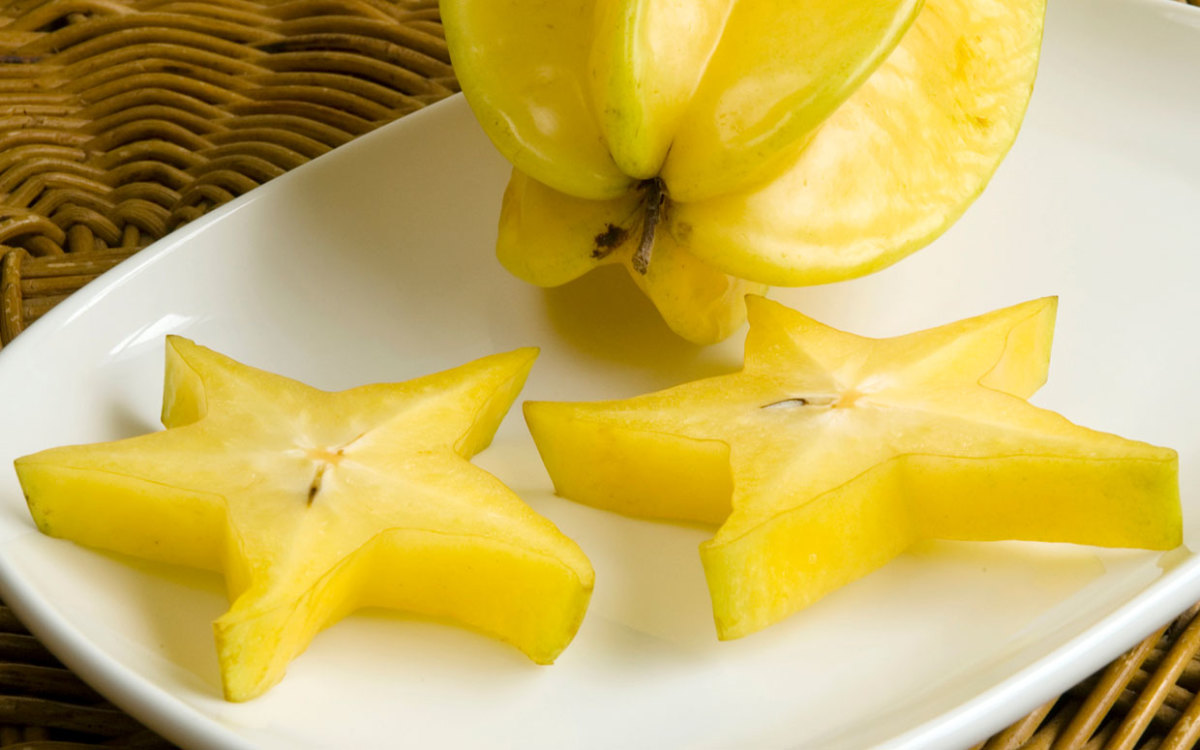
It is a sweet-sour fruit that is low in calories and high in fiber.
- Color: Yellow with black seeds.
- Why It is Poisonous: It contains oxalates that cause severe kidney issues, seizures, and even death.
- Side Effects: Seizures, Kidney failure.
27. Karaka Fruit
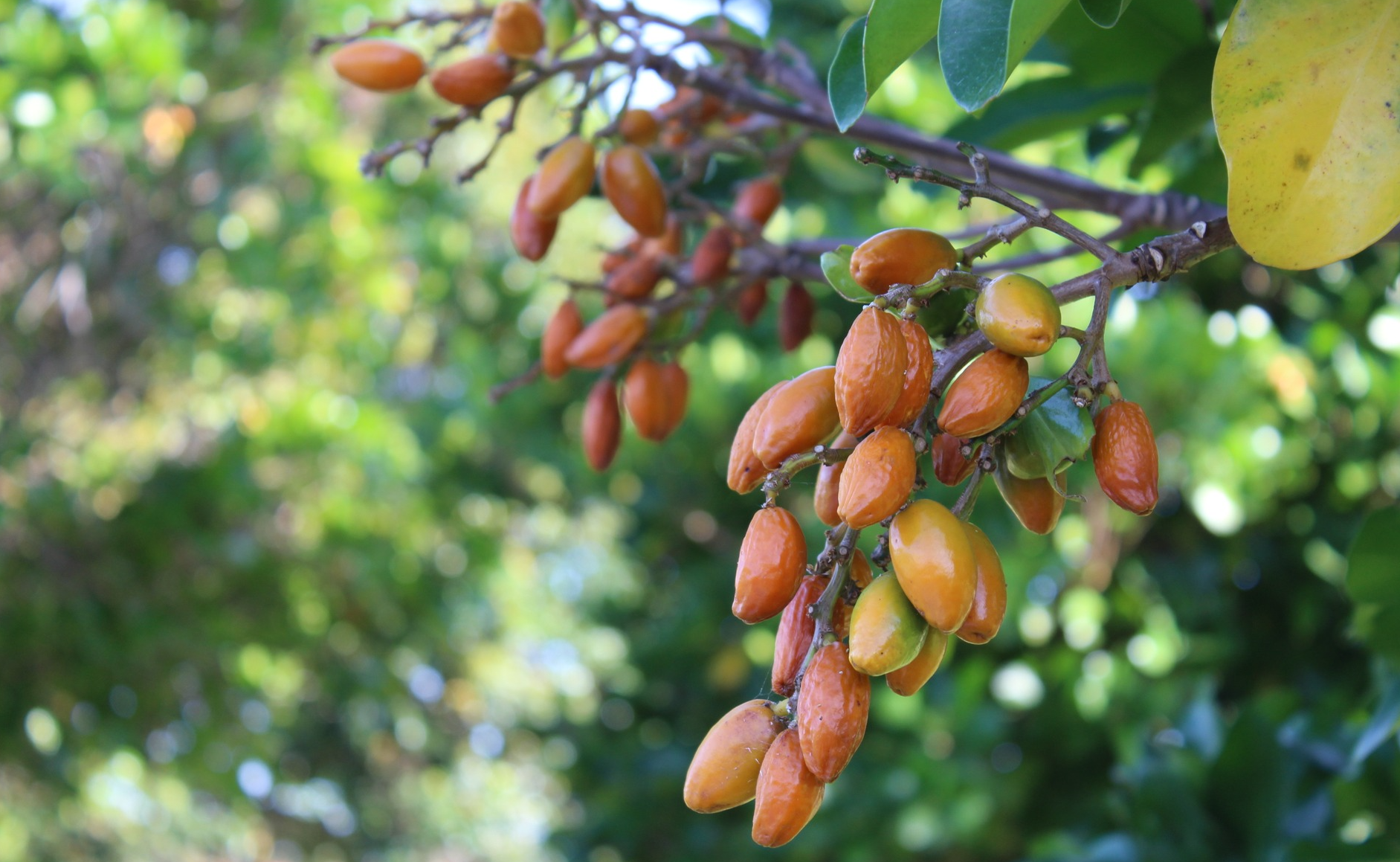
Oval, fleshy drupes with a large seed inside. It contains karakin, a toxic alkaloid.
- Color: Orange-yellow when ripe.
- Why It is Poisonous: Fruit and seeds contain the toxic alkaloid karakin.
- Side Effects: Nausea, vomiting, seizures, paralysis, and in severe cases, respiratory failure and death.
Conclusion
While many fruits are safe and nutritious, it’s crucial to know the potentially dangerous ones lurking in nature’s bounty.
By familiarizing yourself with these 27 poisonous fruits, you can protect yourself and your loved ones from the harmful effects they may cause.
Remember, prevention is key when it comes to avoiding accidental poisoning. Always research unfamiliar fruits before consuming them, and if you suspect that you or someone else has ingested a poisonous fruit, seek medical attention immediately.
Share this information with friends and family to spread awareness and promote a safer, healthier lifestyle.
Stay informed, stay safe, and enjoy the wonderful world of fruits while being mindful of the risks.
Your well-being is worth the extra effort!



